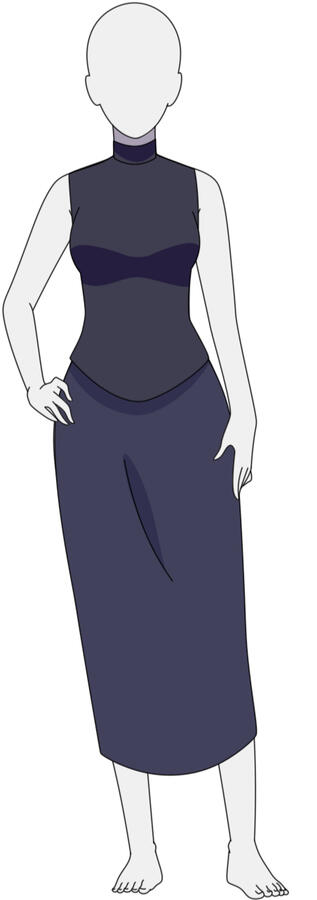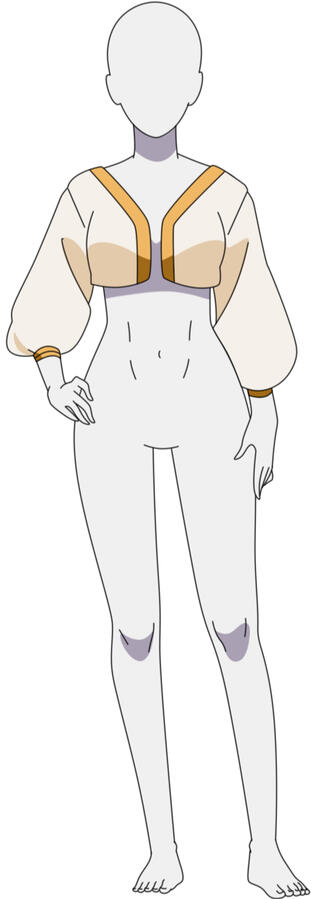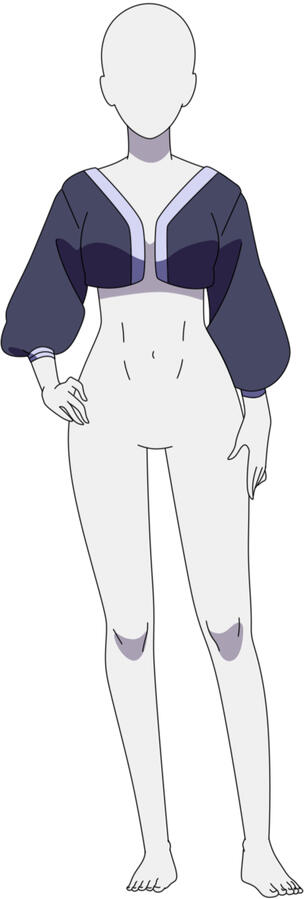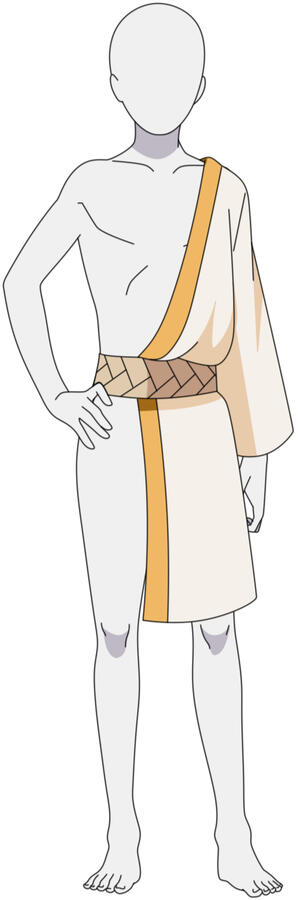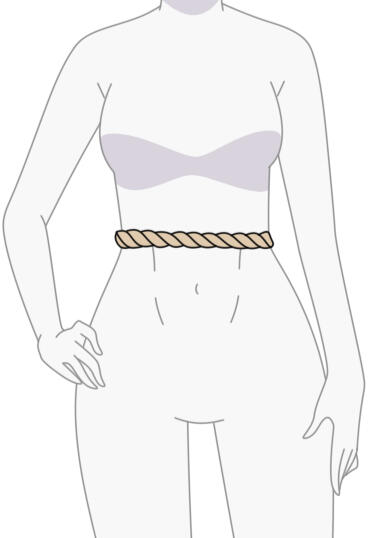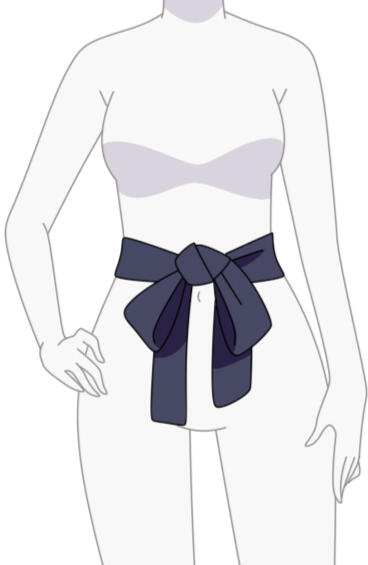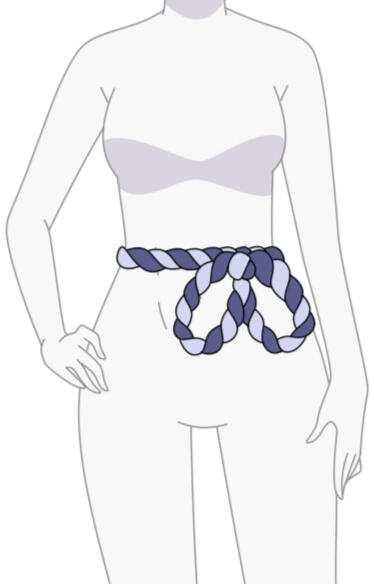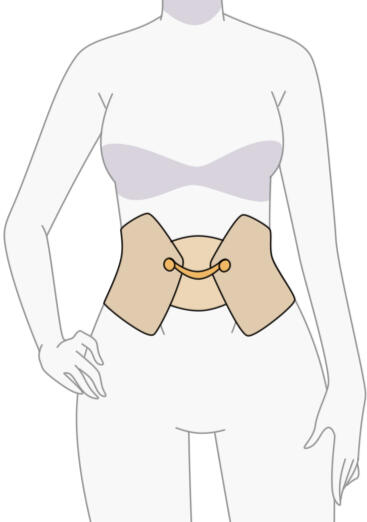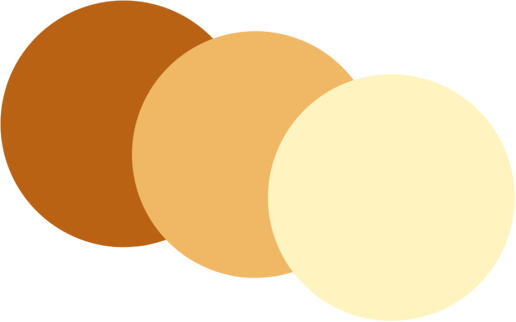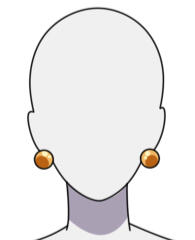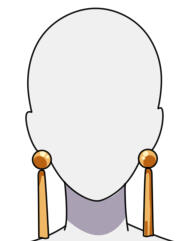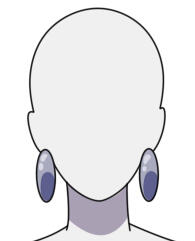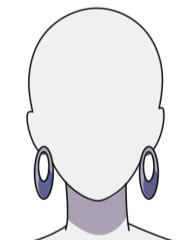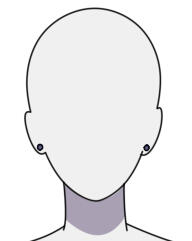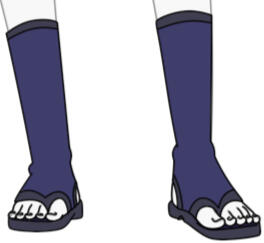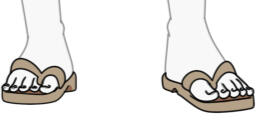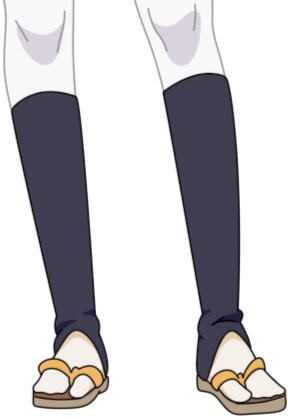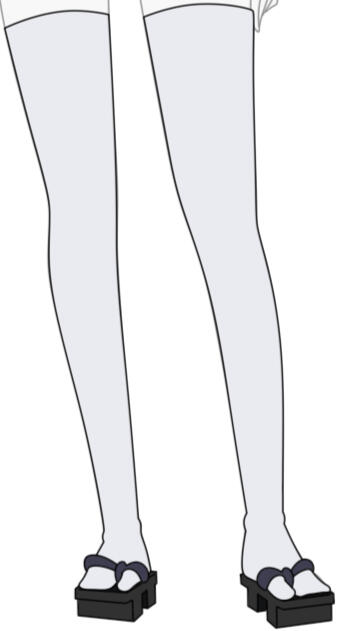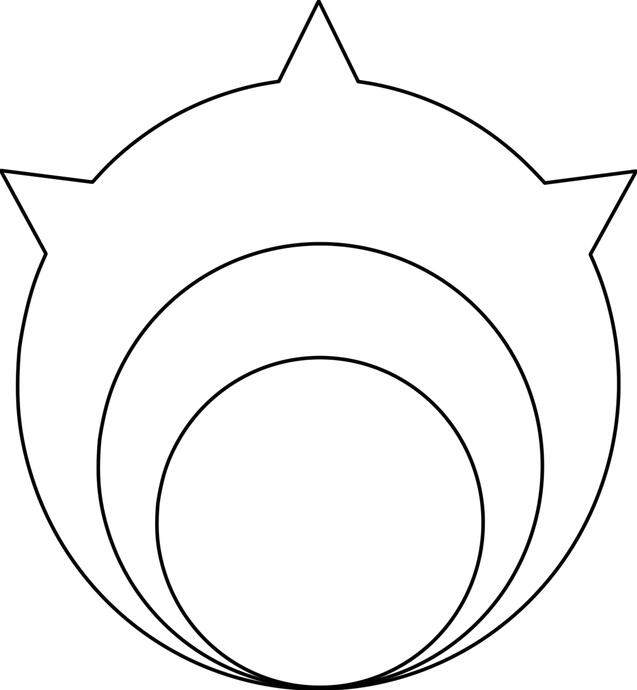

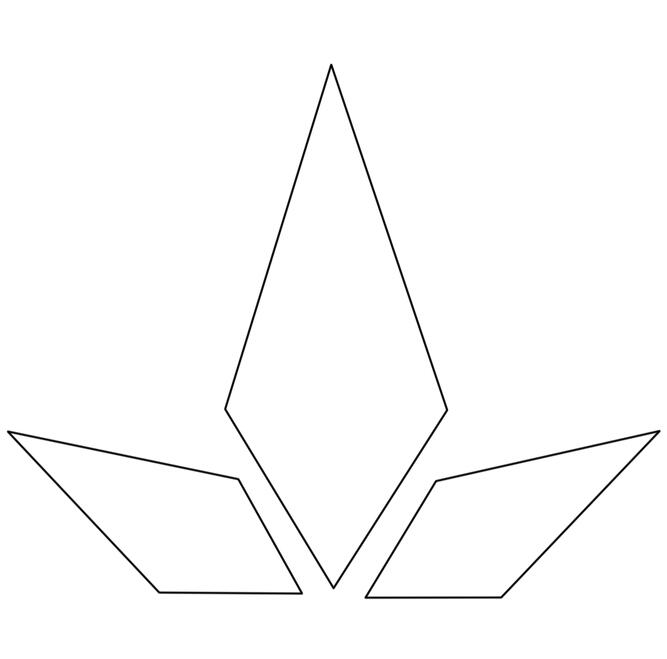
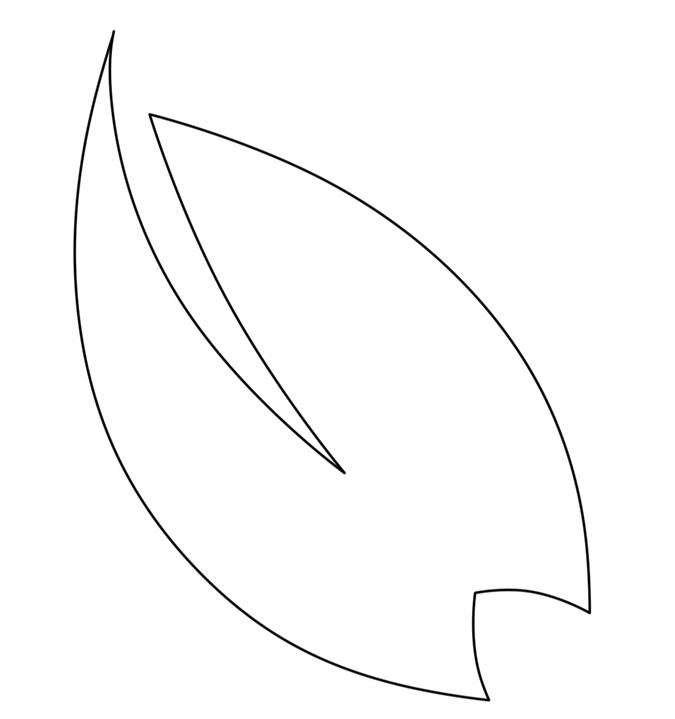
郷に入っては郷に従えentering the village, obey the village
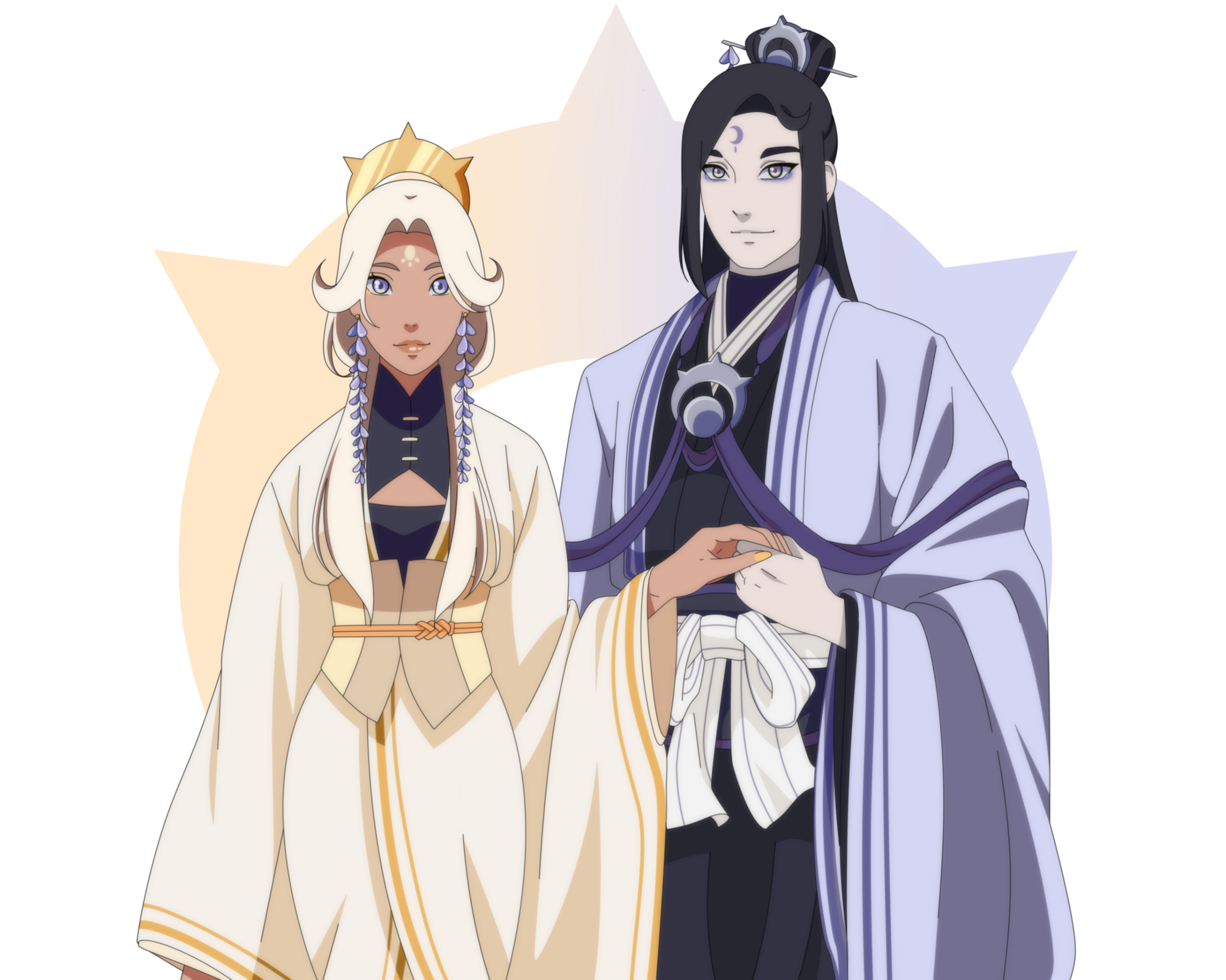
aihana
RULES AND GUIDELINES
1. Please ask for permission to join any of the clans, there are limited slots.
2. Remain kind to everyone - no drama will be tolerated.
3. If you're seen creating drama with any of the members involved you will be kicked - you will retain your OC but it will be stripped of their outfit, and outfit colours. The Fujiwara symbol, jutsus and other affiliations will also be removed promptly.
4. When your final design is completed, please send it into the founders for evaluation - make sure to join the server to get access to a private channel with both founders.
5. Ask for special positions, we will most likely agree.
6. Please Respect the lore and do not stray from it too much.
7. If you want additional slots, you will receive them upon your activity within the server + how many art pieces you produce.
8. The 'chosen' positions have been filled - you cannot have a chosen oc.
9. Make sure to read the entire card before creating your oc.
10. Due to the nature of the clan being inherently romantic, all ocs are required to look their age. Refrain from designing characters who look like children in their adult years, as this opens up a new gate for problems.
11. Upon leaving the clan you may keep your character, but you must change their colours and last name. No affiliation will be permitted.
12. If you are not going to respect the lore and provided colours, your slot will be revoked and you will not be allowed to join.
13. Have fun, not optional.
village information
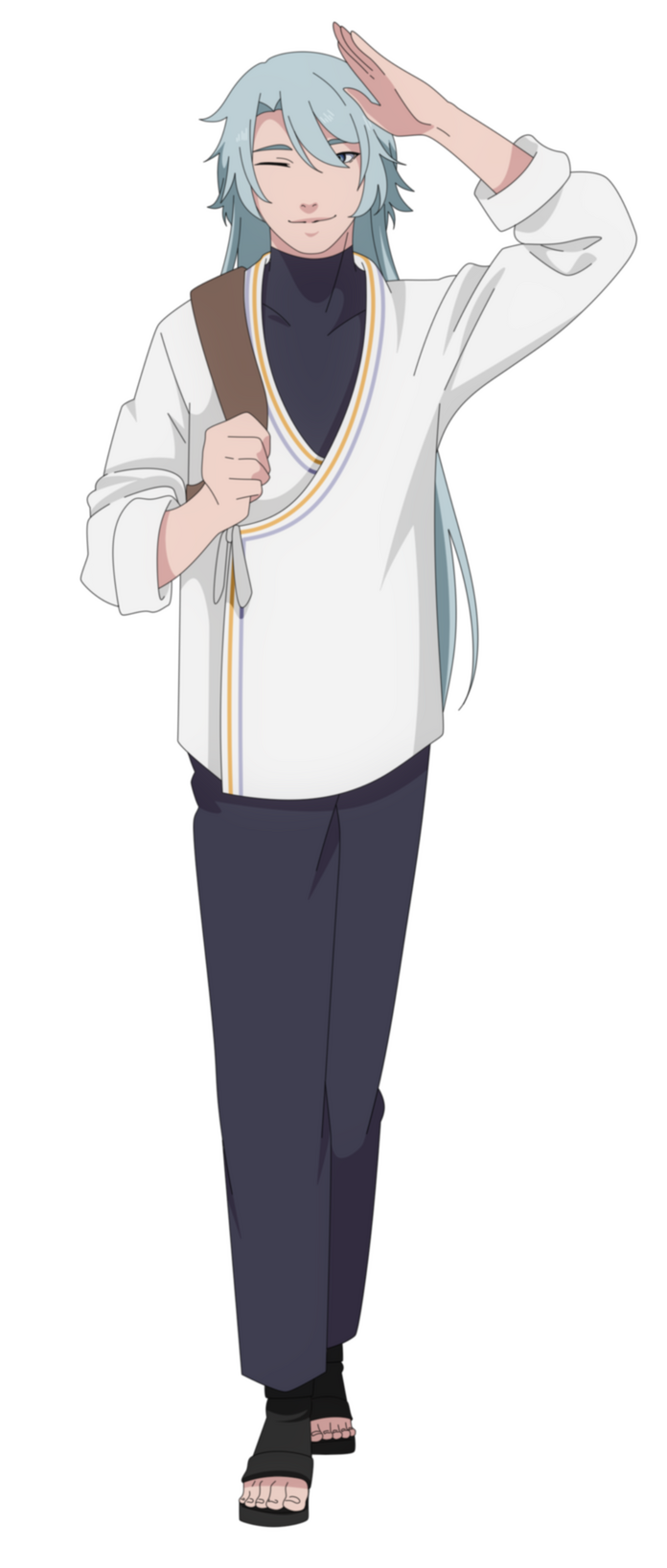
Aihana formed over years of war and struggles with other nations, and eventually gained independence - being declared as a hidden village after the second shinobi war. The village has a rich history dating back to post-Kaguya's arrival. From demons to flowers, Aihana has always been a place welcoming to everyone.A common misconception the village faces is that the residents all come from one of the founding clans - this is not true, as many foreigners have settled there due to the beauty of the flora and fauna. It's a village known for hosting beautiful weddings, granting access to people to have exquisite honeymoons and the lovely and healing hot spring baths.Some clans have strict clothing codes, while some clans are more relaxed - one thing is for certain though; when entering Aihana as a foreigner not belonging to a clan, you are given a cloth to wear over your garments.
LOCATION
Aihana village
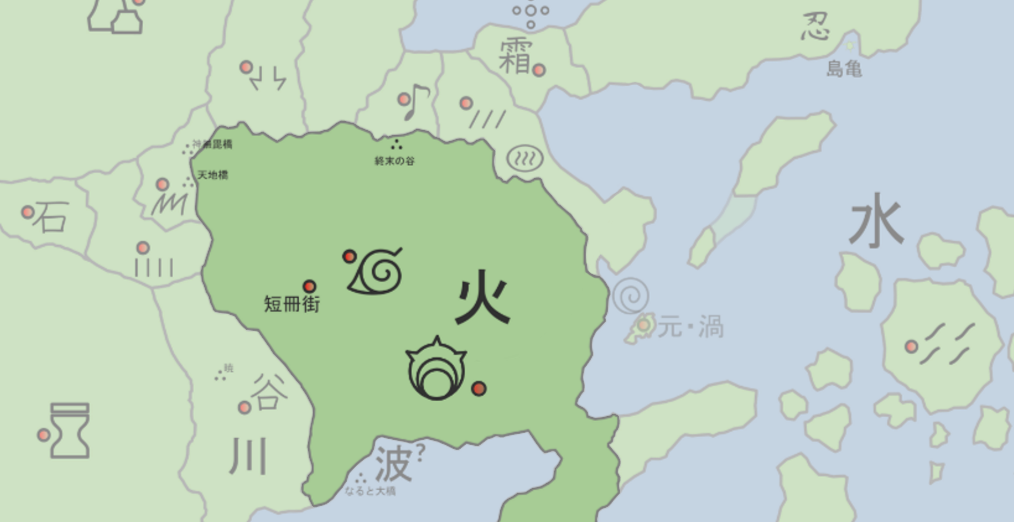
Located south-east of Konohagakure, the village (相花 - Aihana) was formed as the years passed. It has many sectors in it, each serving a purpose. Due to the Fujiwara being a founding clan, most of the village is centered around them; the Hikari and Kurai path have separate training grounds - though the living spaces near the compounds are comprised of both Hikari and Kurai path inhabitants. Though two other clans reside within Aihana as well, the village is mostly catered for the Fujiwara.The Healing Hotsprings is a tourist attraction, generating some income for the village - due to Wisteria trees that surround the village, there had been a space created for outsiders (non-Aihana residents) to get married, and it also serves as the grounds where the Kekkon (結婚) takes place. Although it translates directly to marriage - it is more so a unision of the souls belonging to the 'chosen' Hikari and Kurai path member: i.e, the Jogi.The village is built on small hills with stairs and paths carved out for the people to reach places easier - and access is open to everyone. There is no graveyard, as the bodies of fallen are planted in fresh soil to give life to the abundance of Wisteria and other flora growing around it.
The Hikari Training Compound has a pond filled with healing water, imbued with the chakra of the Hikari ruler and all the previous rulers. There's a small bridge over the pond, and the soil is rich. A large L-shaped building is in this compound; it serves as the school for Hikari members, where they learn about healing, how their Dōjutsu works, what their strings of fate do, and where they prepare for life in their path.The Kurai Training Compound is usually active at night, as Kurai members excel there. It has a similar building to that of the Hikari, with a small medic station as well. The building stores weapons, resting areas and more - as well as rooms dedicated to teaching the values of their path. Near the outskirts of the compound are three dirt patches for hand-to-hand and melee combat sparring sessions, accessible to all ages. Dummies made of straw and wood are sprawled all over the compound for the Kurai, allowing solo-sparring to take place as well.Each family has their own home in the 'Living Spaces' - scattered in between them are small bookstores, cafes, libraries and more.The Chosen Home/Main Office serves as the living space for the 'Chosen Pair.' It is surrounded by smaller buildings in which elders and other important members of the clan may choose live in, and the main building has three floors. The first floor is for meetings, ceremonies and other 'administrative' events, the second floor hosts offices for higher-ups, while the third floor hosts the actual living space for the pair. Behind the Chosen Home/Main Office is a large garden in which the farmers work, since the chosen pair would primarily be in that area, the soil is very rich. Farmers who work here are usually retired anbu or skilled shinobi; they have earned the respect of the Jogi and are allowed to be in close proximity to them.
Village life
fujiwara
Between the ages of 5 - 13 all children living in Aihana are subjected to specific teachings. They are taught to not envy other paths, as each path they walk is equally important. This is ingrained into every Fujiwara member and Aihana resident- envy does not exist amongst them. Their path is their pride, and most people strive to excel in it. Envy is taboo, and it is so seldom that members do not fully understand what it means to be jealous.Children belonging to the Hikari path start learning about various healing techniques, how their dojutsu works, how to utilize their ability to see strings of fate and more. This typically starts around the age of 8 - which grants them a very big advantage.Children belonging to the Kurai path follow the same lead, being diligently trained in hand-to-hand combat, agility and techniques on hiding in the darkness, how they use their dojutsu and how to teleport 'between shadows'.By the time they turn 10, the children are offered a chance to join the academy in Konohagakure. If they choose not to do so, they continue Fujiwara-specific training at home. If they choose to go to the academy, their Fujiwara-training takes place on days they have off (typically the weekend), but it is limited to what they wish to specialize in considering the shortage in time. Children who focused on Fujiwara-specific training are subjected to more intricate proficiencies based on the work they wish to do - this typically takes place around the ages of 14 - 15.Hikari proficiencies take them down a medical, bond, maiden or shinobi path. They can choose to become a medic-shinobi, a doctor, a healer for the village, take up the path of a guru who deals in love affairs and other life decisions, they can join the police force in Konoha and more. Shrine maidens also exist - but this is a lineage one has to be born into.Kurai proficiencies take them down a very brutal and aggressive path - focused on shinobi work, fighting, slaughtering enemies of Konoha and Aihana and more. A lot of Kurai join the ANBU for the Leaf. Other jobs include, but are not limited to: Bodyguard work, physical trainers for the clan and farmers (more so in protecting the land).
fujihana
A faction of Hikari had found an affinity for flora, and over time their healing properties slowly faded away. They developed a genjutsu instead - members of the Fujihana clan tend to the gardens in Aihana, making sure it grows and prospers. Majority of them are seen tending to floral shops, or work with event planners to arrange flowers.During certain ceremonies, they're seen manipulating plants to make a spectacle. During the Kaika-sai festival, they gather to see the wisteria bloom. This event is very special to them as it relates to floral activities.Like the Hikari and Kurai, they're trained in their jutsus from a very young age. They have patches of land all scattered outside of Aihana where they practice pouring their chakra into the flora to aid it in growth. When this skill is practiced enough, they have the opportunity to become a shinobi of Aihana, or they can move to Konoha to live with the faction that resides there.
fujikaze
The Fujikaze clan is predominantly located around the outskirts of Aihana - bordering on the wilderness that surrounds the village. Their main focus revolves around birds - they have various jutsus and aesthetics around it. Members of this clan are often seen serving for the Aihana shinobi, or accompany mercenaries in their travels to send word back to Aihana regarding mission updates.They are seen training avian wildlife in order to form contracts with them to allow them to reside within Aihana, offering sanctuary and a secured food source. They have in depth rituals to obtain their jutsus as well.
HISTORY
Before the warring states era, since the dawn of humanity, two clans had been at constant war. In an attempt at peace, a great wall had been erect to divide the land among these clans - their names are now long forgotten, but the tale is still told. This wall in its great scale, cast an even greater shadow - and one clan got the short end of the stick. The land was infertile, consumed by a constant darkness, and drove the clan into finding other ways to care for themselves. They walked a path of darkness, becoming mercenaries who worked in exchange for food and other resources - driven by hatred and a primal urge to survive. The clan that was on the other side of this wall had flourished, taking the rich soil and all the minerals to their advantage - due to the lack of need to fight and survive, they became skilled doctors and agricultural managers.
Two lovers soon emerged - however, what they had was forbidden. The people of light were regarded as selfish thieves, and the people of the dark had been seen as barbarians who will kill for the bare minimum. A warning had been issued - do not approach each other. The hatred those clans had for each other, as well as that great wall, had manifested as a demon of some sorts. It's lifeforce was scaled on the amount of malice the people of each clan bore in their hearts, and thus tethered itself to the wall. This spirit thrived on these negative feelings, causing plagues and illness to spread to both clans - the soil was tainted, the water defiled, and life in general was taking a turn for the worse.The two lovers put the puzzle pieces together eventually, driven by an urge to protect their clans, and above all, each other. As everything got worse, they did what any couple would do: destroy the wall to weaken the demon.
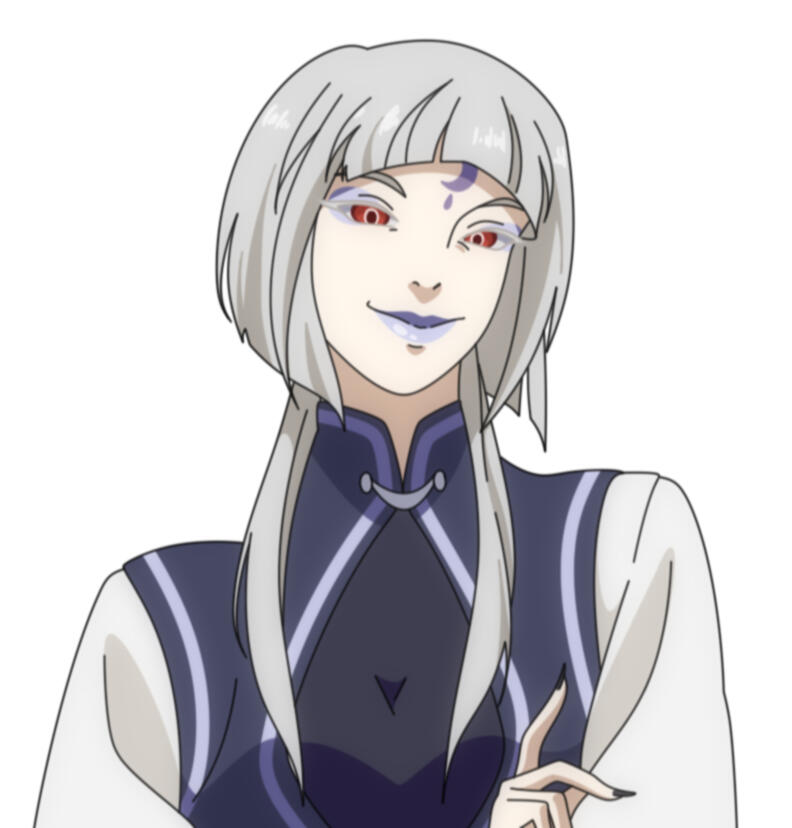
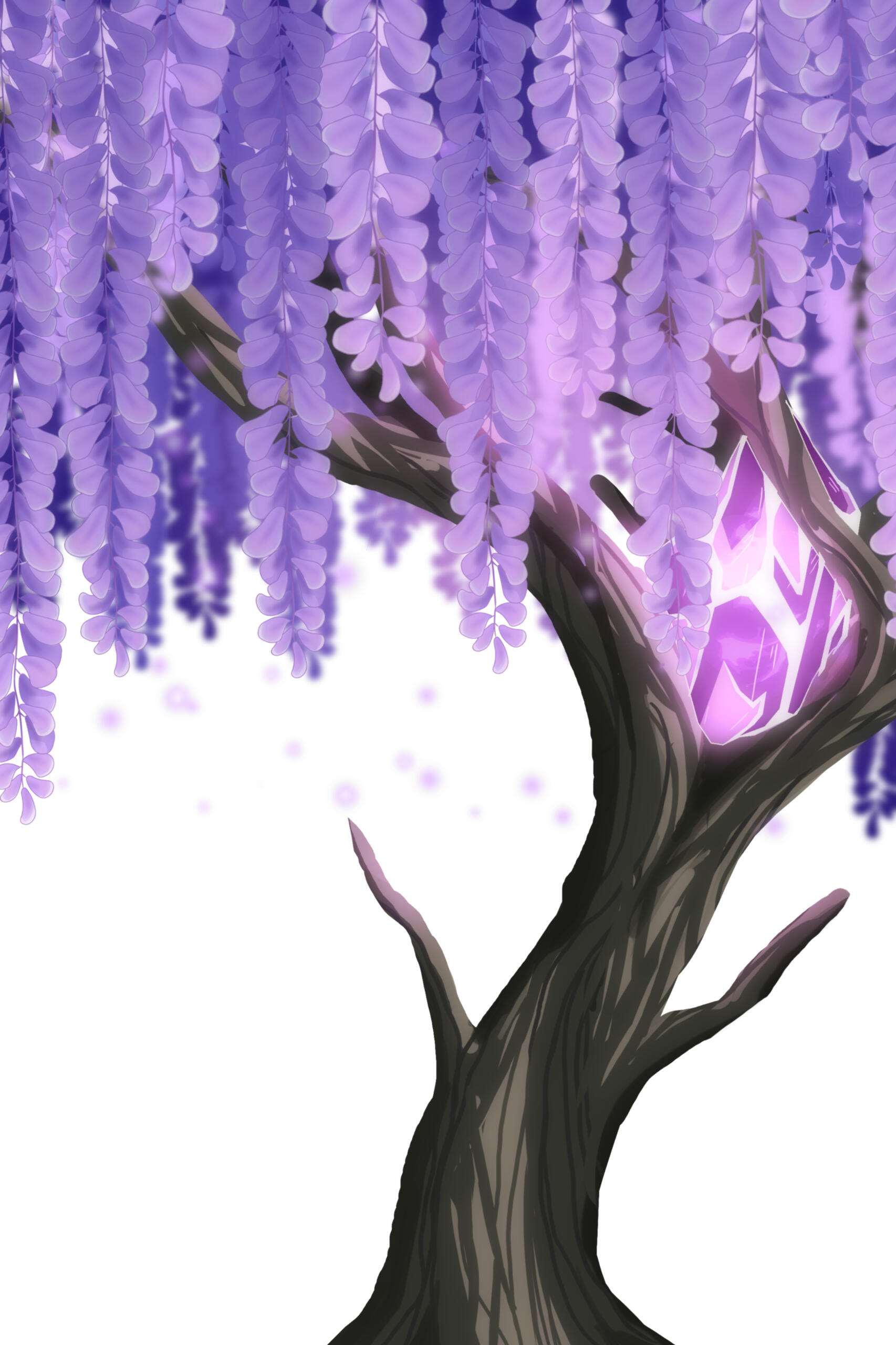
This weakened the demon, as the physical object it had tethered itself to was now destroyed, and in a fit of rage it unleashed all of its power to destroy the two clans. They fought endlessly, the opposing clans now teamed up and worked together to defeat it. Though, it resulted in one half of the demon's chakra being sealed in one lover, and the other half in the other lover; an unbreakable seal had formed, and thus the creation of the Fujiwara clan came to be.As for the demon's physical body, it formed a large tree - now a manifestation of their love. The lovers had vowed to keep this demon at bay as long as they were together, and then the two clans that were set on destroying each other now had to work alongside each other to survive. As time passed, the clans merged and formed one, but with two vastly different paths.
The path of light (光 - Hikari) and darkness (暗い - Kurai) had formed as subbranches in the Fujiwara clan. The energy of the demon, both dark and light, had formed part of the chakra of the lovers. The seal placed on them had a strange side effect – every few generations a chosen pair of children will be born. Most could argue that this is just the energy of the demon trying to merge with itself again, but the Fujiwara people has dubbed them ‘the chosen ones’ - as they are the strongest and purest holders of these energies. They are the next leaders of the clan.
Currently, this title is held by Misaka and Ren Fujiwara.As the years passed, Konohagakure formed and pledged to protect and aid them in exchange for services – the Fujiwara has since honoured it. They partake in services such as the ANBU, general Leaf Shinobi, civilian jobs (such as book store owners, bakers, farmers, etc.) Their existence is essential to the world. Once, leaders of the clan did not exist as they were wiped out, and it did not go well. This tale is never told, though, in order to
protect the clan. It is remembered by the elders and old books collecting dust.
Chakra Systems
DEMON CHAKRA
- It's no secret that all living being possess chakra - animals, plants and humans. The demon also possessed a chakra, which has now been 'sealed' in Michiko and Kanon. They happened to be viable hosts, and the chakra merged with their own. Every few years, a new pair of jogi are born. The demon is always trying to reuinite itself. Jogi - or chosen pair - carry a hundred percent of the demon's chakra. They are reincarnations of it. Their chakras are united, bonded to each other - this way, they can feel each other's emotions, thoughts, feelings, pain, and so much more since birth.TAINTED CHAKRA
- Before the Hikari and Kurai formed, the two branches of the clan lived their lives separately. Both branches consumed tainted chakra - the plants, the animals, and everything else. It has become part of them. As year's progressed, the tainted chakra weakened them immensely - they couldn't consume normal chakra as a normal living being, but they were free to procreate with whoever. Their bodies are dependent on the chakra that had been tainted by the demons - and thus they all wear earrings, it allows the Jogi to share a fraction of their chakra with their residents. The small amount the Jogi share with them is enough to set them leagues above other shinobi. Hikari and Kurai have different chakra colours - respectively, Hikari have a yellow chakra while Kurai have a dark blue bordering on purple chakra colour.CHAKRA
- Outsiders, those not of the Fujiwara bloodline, carry normal and untainted chakra. It has the standard light blue colour seen on Sakura, Naruto, Kakashi and other main cast members. The chakra is seen within the Fujihana and Fujikaze. Though these two clans have 'standard' or 'normal' charka, they are descendants of the Fujiwara and thus have more chakra than most. Fujiwara blood has just been worked out of their systems.
Hikari Chakra

Kurai Chakra

The Factions
In both the Kurai and Hikari branches, there were factions of members who branched off. The Fujishiro clan were the first to branch off - having fled to the Land of Iron. They were Kurai descendants who had claimed soil in a different land. Of the Hikari, two factions formed - the Fujikaze and Fujihana. The Fujishiro are regarded as a brutal clan, ruling with an iron fist - whereas the Fujikaze and Fujihana clans are loyal supporters and allies to the Fujiwara. There is currently a lot of generational tension between the Fujiwara and Fujishiro.
timeline

Fujikaze's Formation
Generations had passed since the merging of the two warring clans into the unified village of Aihanagakure. Ancestors of the Fujikaze sought solace and guidance from the majestic birds that roamed the skies. Threats like the demon could return, they thought, and thus they tried all they could prepare for future disasters. They observed nature and the harmony of it.Being a branch from the Hikari, they were in tune with nature and all emotions. Due to training and meditation, they slowly unlocked the mysteries of wind currents, and formed a connection with avian spirits - what started as a minority of Hikari eventually grew into it's own clan; now known as the Fujikaze - they're excellent trackers and shinobi.
The life of a Fujikaze
Childhood
⤷ Ages 0-5
All Fujikaze get a windchime by birth, gifted to them by the head of the clan. It is a keepsake, something that binds them to their family. It does not hold any powers or anything of the like. These are hung up in their houses, if one were to move away for example they'd take their chime with them. It's purely for sentimental value. Some opt for wearing their chime on them, but it's not common as these chimes are very important to them! In the case of the chime breaking, it would not be the end of the world. They have a very healthy attachment to it.Elementary Phase
⤷ Ages 5-7
Children will go to the Aihana academy and learn various skills, make new friends, bond with other and get taught valuable life lessons. They are thought about the different paths in their clan and are helped with their Tori No Odori. When they're 8, their shinobi-based training starts. More complex classes are offered.Tori No Odori
⤷ Ages 8
The child performs a dance to find their bird and to reveal the path and powers that are bestowed upon them by said bird - this can be either the Hankyo, Emono, Himei or Aruku path. The children have no say in which bird chooses them, and their avian counterparts do not have lineage. It's very possible for mixed paths to be in one family.Bonding phase
⤷ Ages 9 - 14
Fujikaze spend their time bonding with their; spending time learning about their paths and powers from senseis. This would be the same as any other ninja academy. They form teams of 2 to 3 people to go and do minor and major missions. During this time they will always be accompanied with a sensei (Jonin rank) and a chunnin Kurai. These missions are never life threatening.Primary Phase
⤷ Ages 15+
The clan member will start to work like any other. They can do so by becoming Aihana shinobi or go and work for Konoha. They are primarily Shinobi, but other paths are available. They specialize in tracking, shinobi work, and taking care of avian life. They can also become crafters, helping the clanhead with designing wind-chimes for future generations.
civilization
Fujikaze members live primarily on the outskirts of Aihana. Their homes stunt big windows, wide doors - a lot of openings for wind and weather to peek through. Their clothing mimic their homes as well - big gaps and very flowy to allow them to feel the wind. These homes blend in with nature, being made of wood and having lush greenery surrounding it. It's definitely still a human craftsmanship, but it does not disrupt nature nor cause visual pollution.Due to them living on the outskirts of Aihana, a lot of their classes are offered outside. They are in tune with nature, and will most likely be found walking in a forest, foraging, or attempting to communicate with animals (they do not always succeed.)Fujikaze members who are adults usually form part of Aihana's tracker teams or wherever their jutsu can be used best. Women are very maternal in nature, and these members often copy some avian life in the sense of they 'mate for life.' Fujikaze members will rarely break up with their partner - they aren't the type to deceive them either. They will make things work, much like the Fujiwara, but instead of believing in 'soulmates' they believe in hard work and loyalty. They are prone to bump heads and do grand displays to attract someone, but all-in-all aspects such as cheating does not exist. Their customs are different from that of the Fujiwara - the death of their partner will sadden them, but do not carry the same consequences as the Fujiwara.
Couple structures
Fujikaze members give their hands to people they feel are deserving of it. Typically, it is given to other Fujikaze members; there have been instances where it is given to someone else completely though. Within the couple, the dominating counterpart usually prefers to flaunt their partner by showering them with gifts such as rocks, metal jewels and vibrant face paints. The recessive counterpart usually accepts these gifts, and enjoys being flaunted. Couples encourage all legal dynamics, love has no label.
Offspring
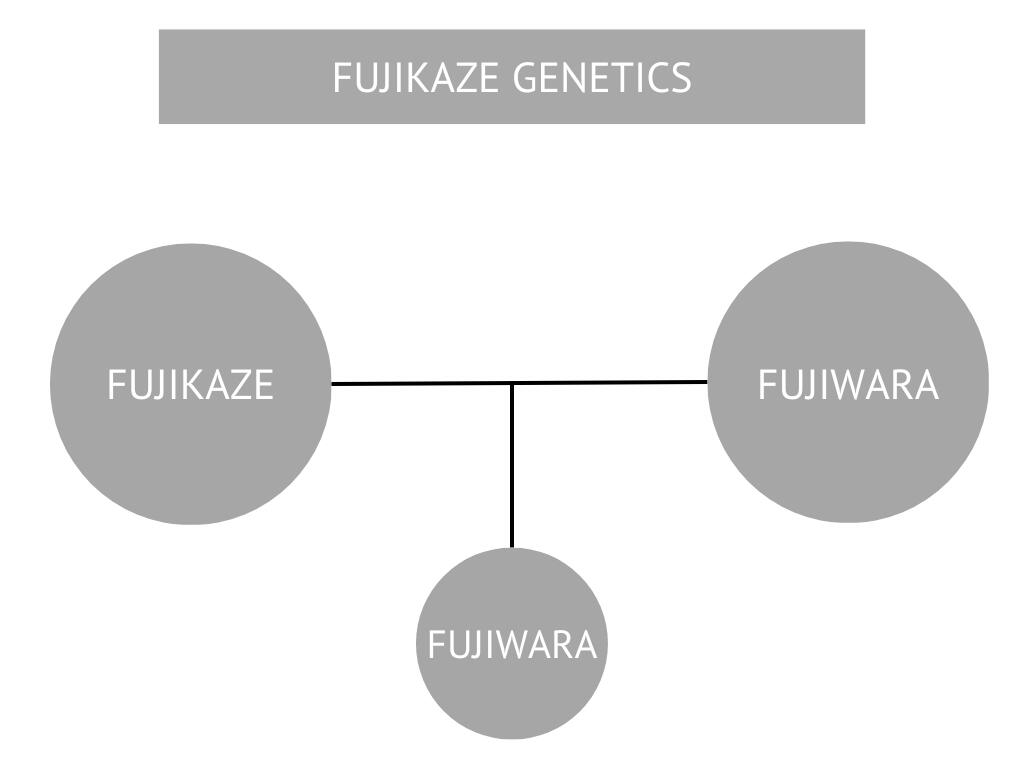
If a Fujikaze and a Fujiwara have offspring, the child will inherit the path of the Fujiwara parent and their genetic makeup. Fujiwara genes are extremely dominant.Example:A Emono path and a Hikari have a child. The child will look like the Hikari, or take traits from the Hikari's bloodline (hair, eyes, jutsus) and will be considered a Fujiwara, not a Fujikaze.
If a Fujikaze and a Fujihana were to copulate and have a child, there's a 50/50 chance of the child inheriting either the genetic code of the Fujikaze or Fujihana parent. Siblings can be of mixed lineages.Example:A Fujihana marries a Fujikaze. They can have two children who follow the Fujihana, or the Fujikaze. They can also have one child who follows the Fujikaze and one child who follows the Fujihana. The child will take up the aesthetics of their 'rightful' clan (eyes, hair, jutsus.)
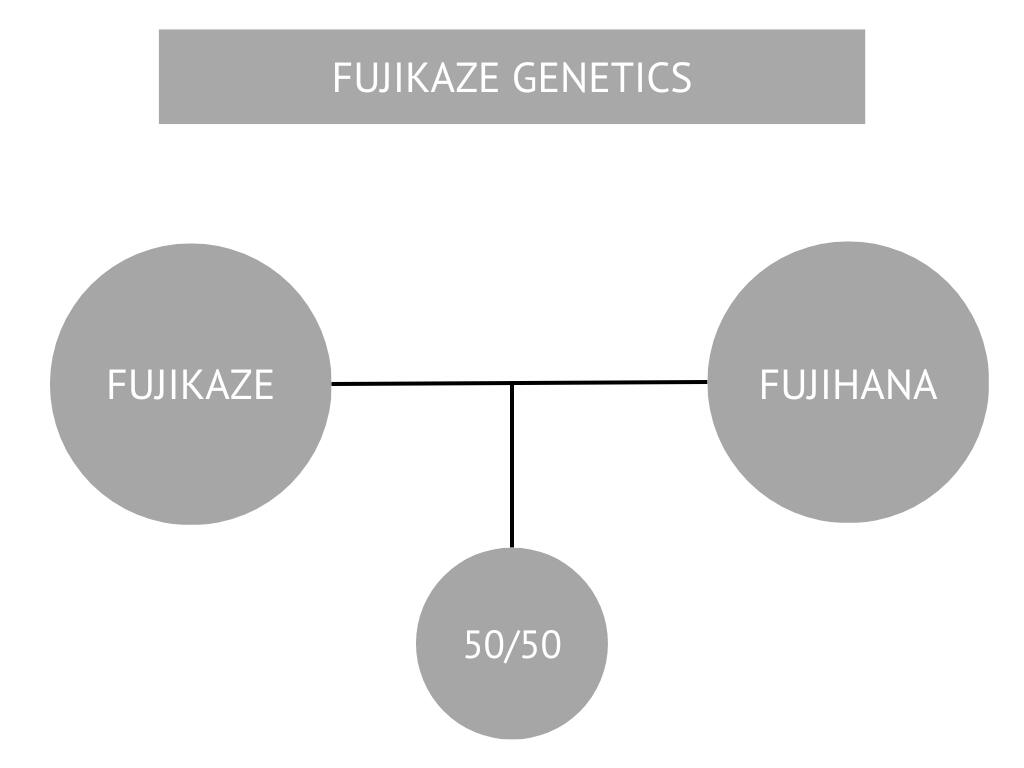
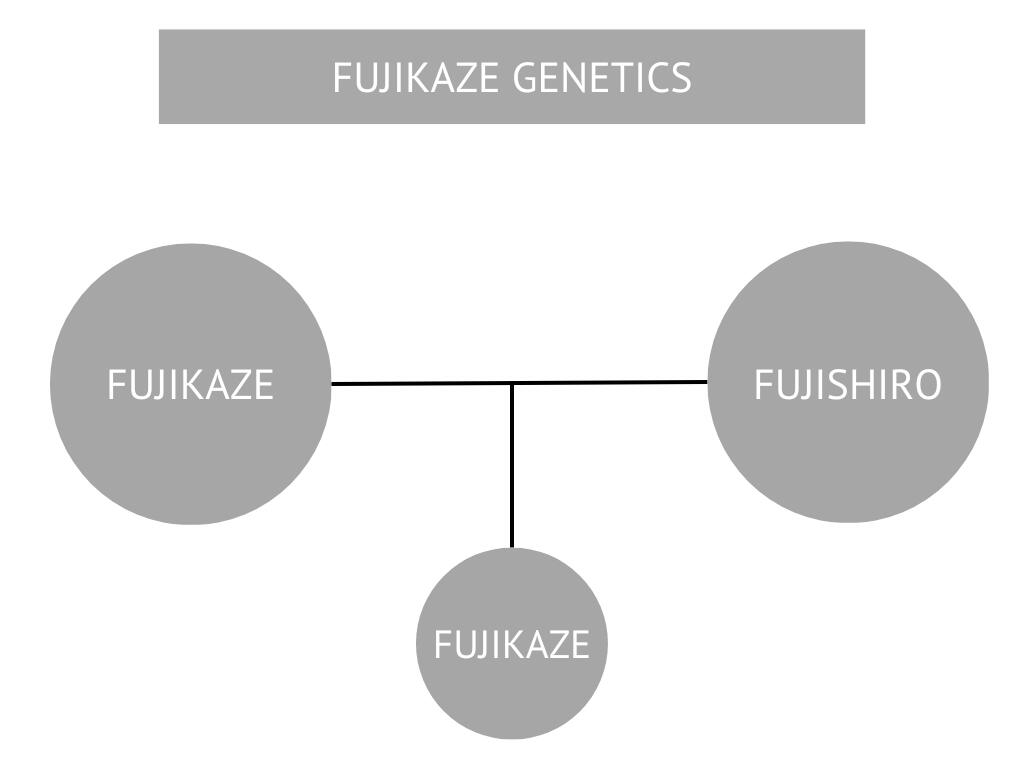
The Fujishiro genes are extremely weak and recessive. Unless it is a Fujishiro x Fujishiro marriage, the other genes will always trump it. The Fujikaze genes will take over here, and the child will be considered a Fujikaze.Example:A Fujikaze and Fujishiro has a child, the child will take the eye colour, hair colour and jutsu of the Fujikaze - none of the Fujishiro genes will make an appearance.
In the case of a Fujikaze having offspring with anyone outside of the village, the child will remain a Fujikaze. They will take the genes of the Fujikaze parent - hair, eyes and jutsus. Their other parent will offer things such as personality traits and skin tones, hair types etc.
Personality
Fujikaze members have been depicted as extroverted and empathetic people. They tend to prefer their time spent outside and among others - rarely are they seen alone or brooding. They can make someone laugh, or feel the deepest compassion they have ever felt. Fujikaze members are extremely charismatic, having some sort of charm about them when interacting with others. They can cheer up virtually anyone - but do not let these personalities deceive you, they can and will be deadly and brutal if the situation calls for it. They can be ruthless, especially the tracker nin. Fujikaze are sweethearts overall - which is part of what makes them so dangerous.
jutsus
B R A N C H E S
Within the Fujikaze clan there are four branches: Hankyo, Himei, Emono and Aruku. Each branch has a corresponding chakra nature combined with their original chakra nature: wind. The path will usually dictate the occupation of the member; and every occupation is valuable to Aihana as a whole.
E M O N O
(birds of prey)
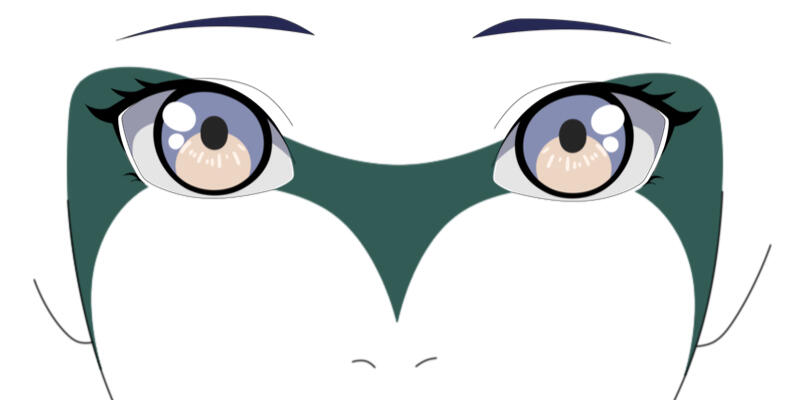
Emono branch members have wind & fire chakra natures; this means they can use a variety of firestyle and windstyle jutsus. Apart from that, their 'pact' with their avian counterpart allows them to see chakra traces when they apply the correct hand-signs and concentrate properly. They can trace the chakra of any person. Chakra traces typically last around 48 hours, so they are adept with tracking. They are swift, stealthy, able to blend with the shadows and remain unseen.
H A N K Y O
(songbirds)
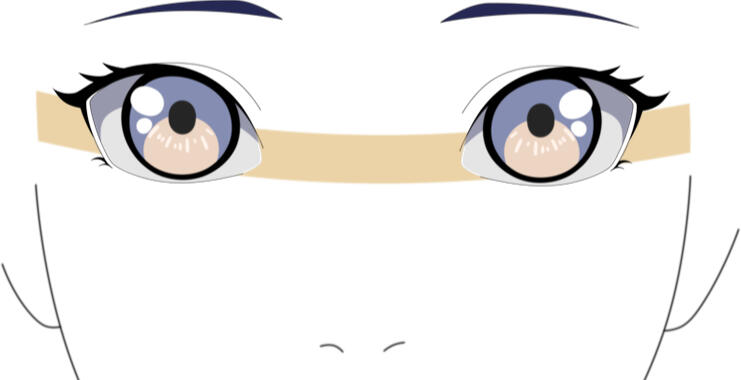
Hankyo branch members have wind & lighting chakra natures; this means they can use a variety of lightning-style and wind-style jutsus. Apart from that, their 'pact' with their avian counterpart allows them to dabble with sound-release. They have the ability to reinforce their voices with wind and lightning chakra, making them able to scream loudly - if it is imbued with both natures, they can damage someone's eardrums while also using the force to push them back several feet. Needless to say, most members of the Hankyo path can sing beautifully. They have excellent control of their vocal range.
H I M E I
(parrots)
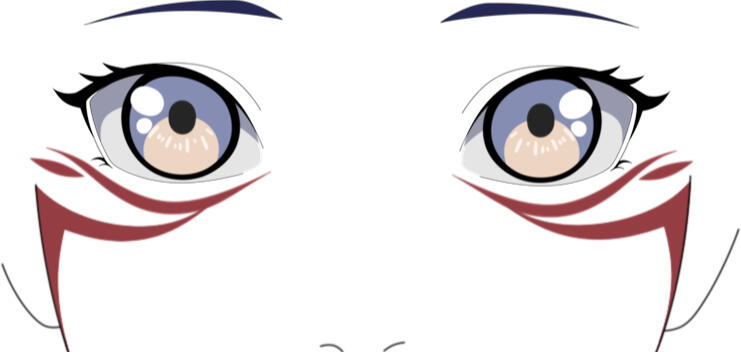
Himei branch members have wind & water chakra natures; this means they can use a variety of water-style and wind-style jutsus. Apart from that, their 'pact' with their avian counterpart allows them to gain access to a genjutsu - Jibun. They trap their opponents in a genjutsu that forces them to fight themselves - a direct copy. The genjutsu will only be broken once their 'mimic' was defeated, and in doing so, their opponent will also take some damage from the ordeal; nothing fatal, but just enough for them to reconsider their strategies.
A R A K U
(flightless birds)
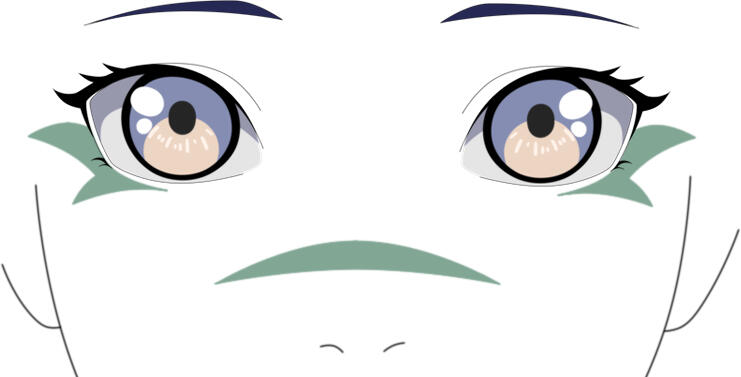
Araku branch members have wind & earth chakra natures; this means they can use a variety of earth-style and wind-style jutsus. Apart from that, their 'pact' with their avian counterpart allows them to summon parts of an avian creature such as wings and talons - they manifest as chakra, but can be used as intended. They can fly short distances, use their wings to shield themselves and grab/slash at things with their talons.
Creating a character
When creating an OC for the Fujikaze, you must first decide on path for them to walk. Emono, Hankyo, Himei or Araku - all these paths have a facial tattoo. The colour can be customized, but not the pattern. You can choose from the available clothing colours. Note: most Fujikaze members have bridge piercings. Shading colours are up to you, please make sure it falls within the same colour scope.
Hair colors
Fujikaze can have more than one hair colour - depending on their path.
Emono and Araku path members can have up to two hair colours, while Himei and Hankyo can have up to three hair colours.




Eye colors
Fujikaze members do not experience heterochromia.

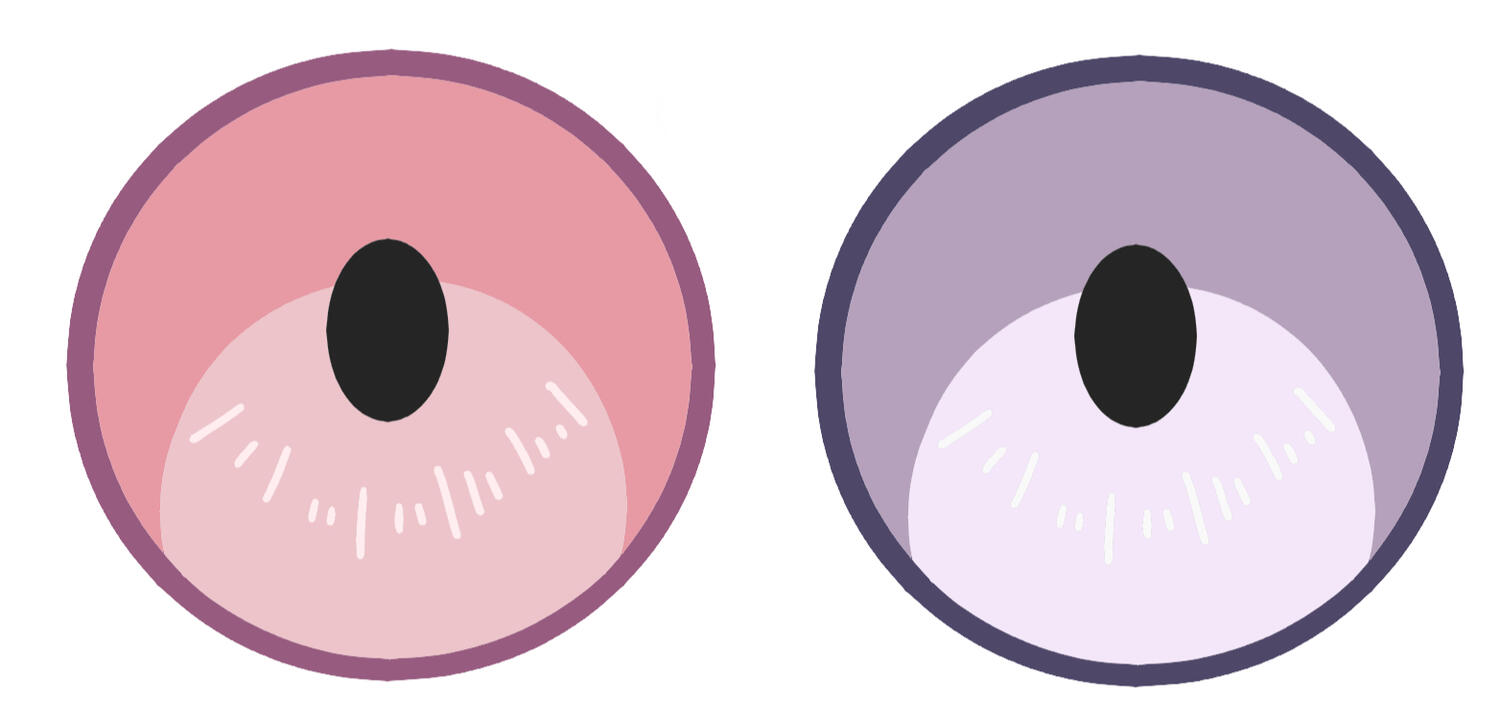
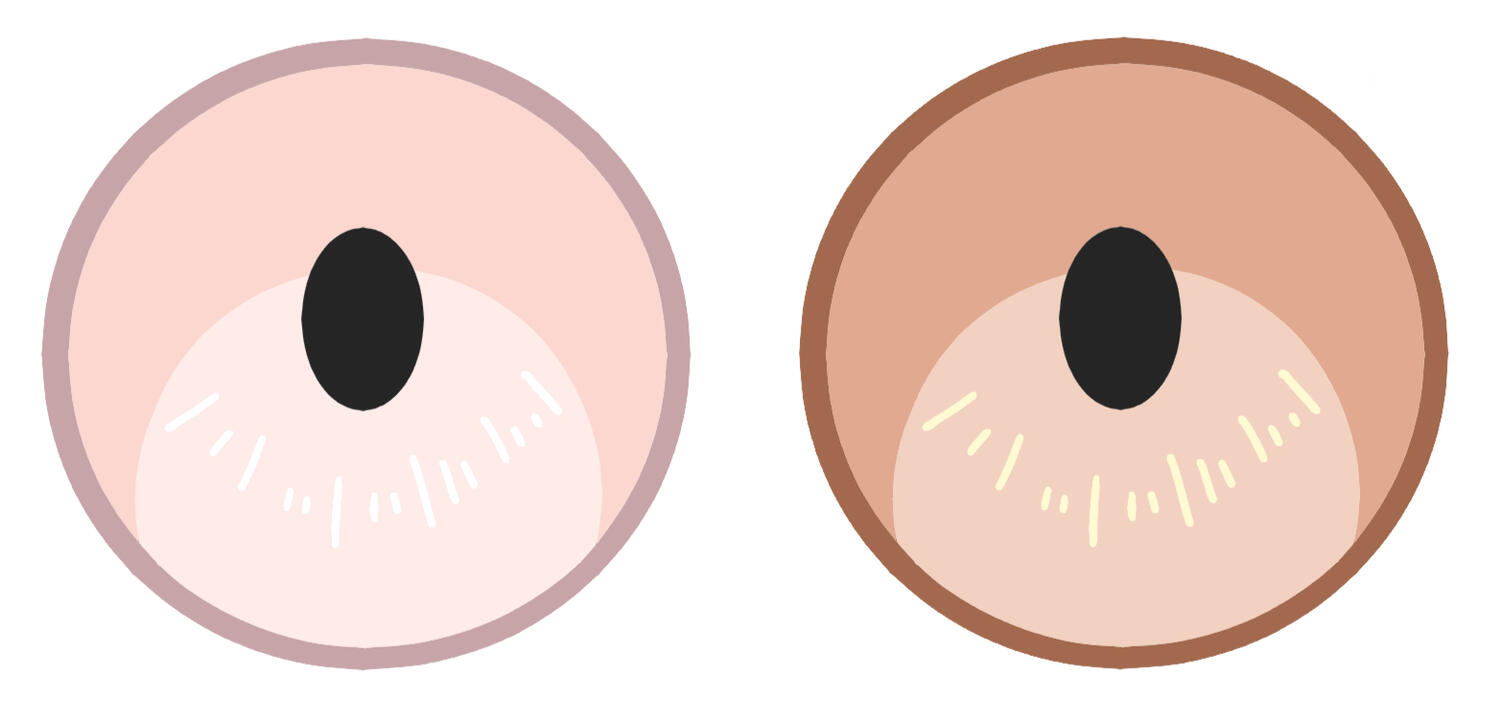
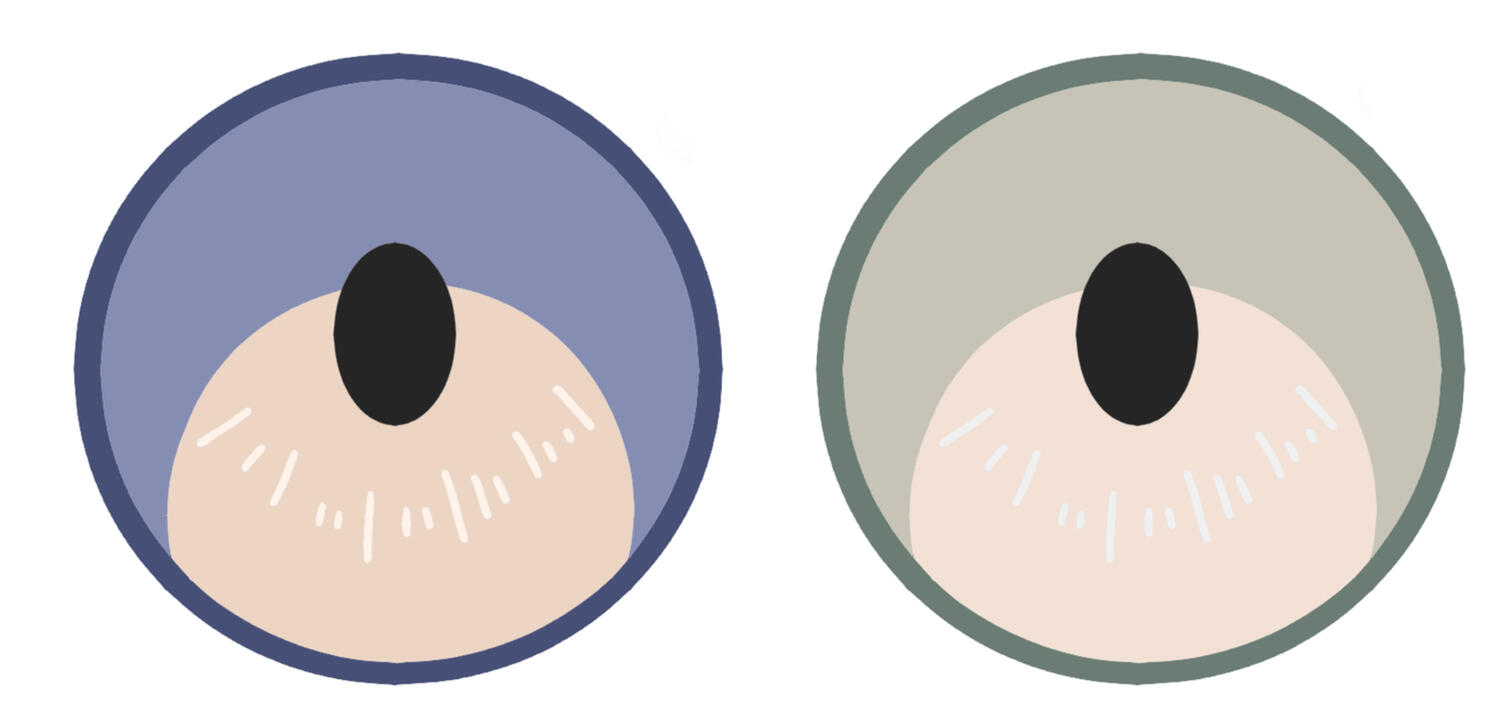
Clothing colors
You can choose from these colours to decide the tattoo colour as well.
Fujikaze members wear very flowy, open clothed. It's inspired from the boho-fashion scene. They're seen stunting anklets (all of them), bracelets, lots of jewelry, bridge-piercings. All Fujikaze have anklets. They're seen stunting feathers as well! These members tend to be colourful in their outfits and general appearance.




timeline
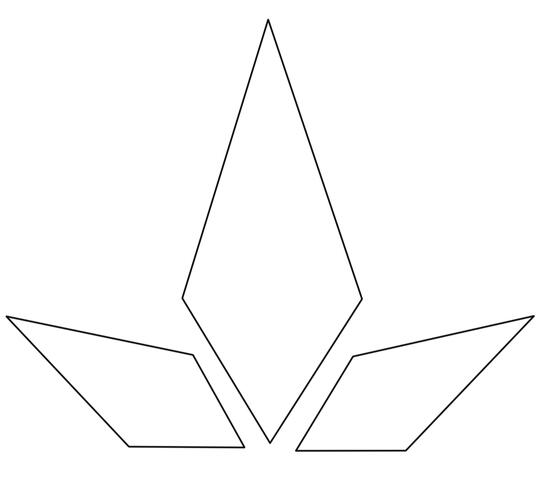
Fujishiro's Formation
Kanon and Michiko, the respective leaders of the Hikari and Kurai, had fought tooth and nail to defeat the demon and break the wall. Naturally, the Hikari had labeled the Kurai as 'barbarians.' After the great defeat, the two paths decided to merge.While some were pleased with the paths merging, open to settle all grudges, an even bigger demographic of Kurai were not fond of the idea. They claimed that the Hikari were taking advantage of them - taming them, using them. They hated the Hikari. In a fit of rage, they refused to merge and left the land they had occupied. They travelled for weeks, and eventually settled on barren land. It was encased in icy snow, atop a mountain peak. Though they couldn't grow the best crops, the land had been rich with animals who were acclimated, confirming that they had a food source.It was barren in the sense of crops, suitable homes. The Kurai that travelled decided that 'they've been too kind, it was time to take care of themselves and refute the weakness that was kindness.' They slaughtered all inhabitants who refused to allow them to stay there, taking the land. If they could help Konoha and other clans to have land, they could surely help themselves . . . right? The moon turned red the night of their bloodshed - and since then, it has been symbolic. The moon turns red every few years since then, only in certain parts of 雪村 - Yukimura (their vilage in the land of iron.)
The Modern Fujishiro
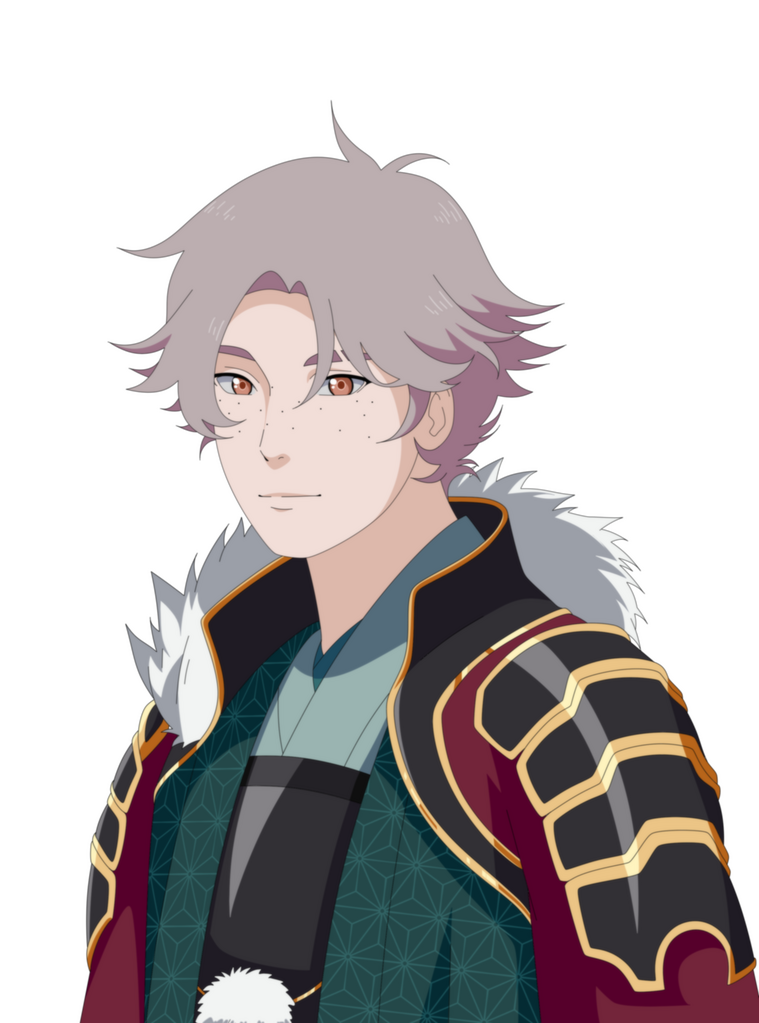
Many, many years later the faction of the Kurai that branched off had become known as the 'Fujishiro (冨士代)'.They're walking relics, displaying what the Fujiwara used to be - unforgiving, brutal, menacing. They regard kindness as weakness, and your punishment will often end up in death.The Fujishiro have acclimated to the cold temperatures, most of them having cool-tones to blend with their environment.They're logical, almost devoid of emotion - apex predators. They are the hunters, never hunted.
The Clan Structure
Matriarchy
⤷ The First Lady
The first born daughter of the Fujishiro will most likely take the next position of the clanhead. Parents will conceive children until they have a daughter - this usually leads to the founding family to be rather large. The first daughter - or known as the First Lady - will be trained accordingly, being taught manners and about customs to eventually take rule of the clan one day.
In the case of two daughters being born as twins, they are usually put up together in a duel, having to fight to the death - that is, if the sisters cannot decide who will rule. There have been instances where one sister decides she will take seat as clanhead, while the other aids her.The current clanhead of the Fujishiro is known as Lady Kaiya - sharing her duties with her sister, Lady Katsura.
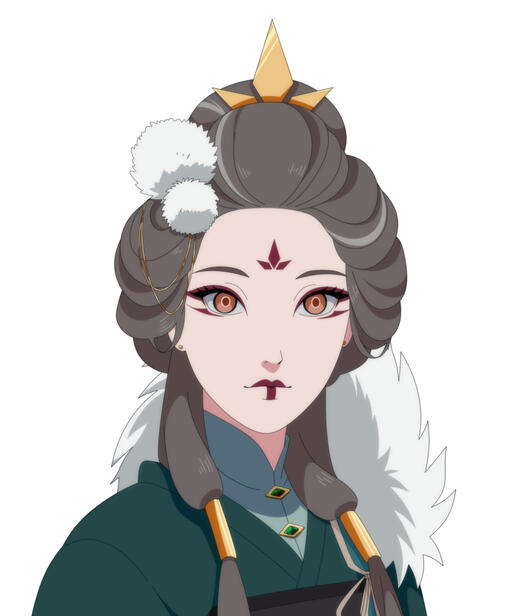
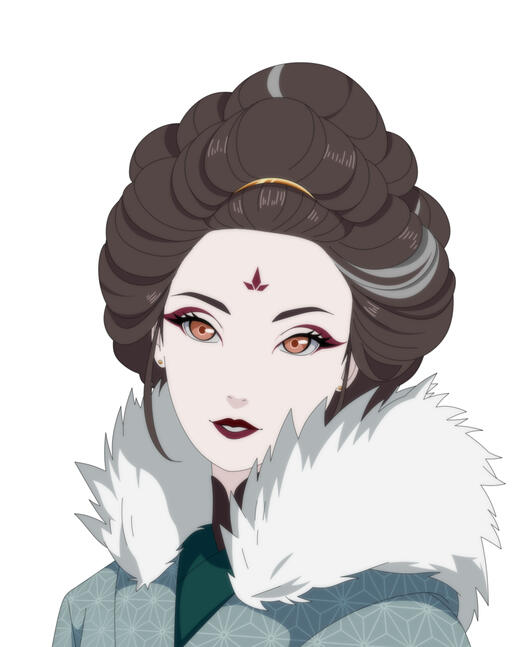
The life of a Fujishiro
Growing up in snowy mountain peaks, the Fujishiro had to adapt to rather brutal living conditions. There's a running joke within the clan that you either 'acclimate, or die trying to.' The members are dressed warmly, often seen stunting thick fur coats.
Childhood
⤷ Ages 0-3
Fujishiro members are taken care of by their families. They are infants and toddlers, so their life is pretty easy. This is the time in which parents gradually expose their children to the cold.Schooling Phase
⤷ Ages 4-12
Children are subjected to school - they learn to read, write, and are trained to fight. They become proficient in swords, katanas, and other weapons such as kunai and daggers. This is a time where they're frequently put to the test.Right to Live
⤷ Ages 13-14
An exam known as 'Shōsha' 勝者き takes place around this age, where Fujishiro are put through various test to be allowed to start training as a genin shinobi or samurai. These exams end in death, disgrace or victory. Most strive for victory and will make peace with death; disgrace is worse than the latter.Training Phase
⤷ Ages 15 - 17
If you succeed in shōsha, you're allowed to either be promoted to the main branch or you stay in the main branch; enrolment into either Shinobi or Samurai is allowed.General Phase
⤷ Ages 18+
They are free to do as they want to do.
Death, Disgrace and Victroy,
Victory above all; Fujishiro are expected to emerge victorious from any test or battle they are in: if not victorious, it should end in death or disgrace. Death means you died as a warrior - you gave your all, and though it was not enough, Fujishiro prefer this method. To be bested in a fight, or refusing to fight, one becomes disgraced. This leads to being pushed out of the clan - you can call yourself a Fujishiro all you want, but you will not be recognized as such. To a Fujishiro, those who are disgraced are just . .. useless.
civilization
The Fujishiro is a clan born from hatred - though they've later transformed into a clan rooted in strength and resilience. Fujishiro are some of the most ruthless Samurai and shinobi among the five nations. They do not serve anyone but themselves, and no one dared to make an enemy of them. Though they are few and far, they are formidable opponents. They usually care about nothing but themselves - to live, one must sustain oneself. Death isn't a major deal, but there are exceptions to some members possessing more emotional intelligence. They are capable of falling in love, but that's a given - they're human, it just doesn't affect them like it does others. Love can be a hinderance to them, so most marriages are based on strength, power and how 'useful' you are.
Hierarchy
There are three sections of Fujishiro.
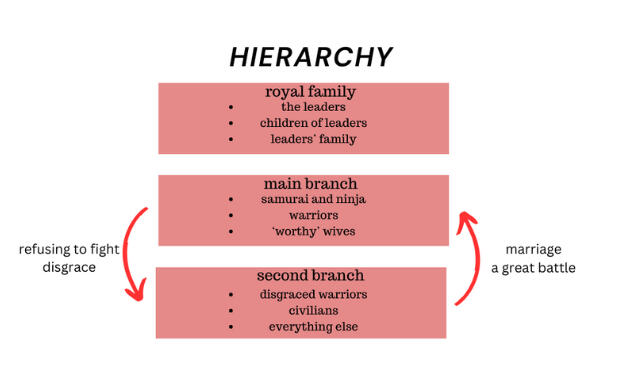
ROYAL FAMILY
The Royal family is currently leading the Fujishiro - they are comprised of those born into the bloodline and married into the family. No one else - this is a closed off branch of the Fujishiro, the most important. They are respected, and most importantly, feared. Royal family members can be disgraced, but that rarely happens. Known members are Kiyoshi, Katsura, Ryoto, Kaiya and Kaito.
MUHAI
Muhai (無敗) are seen as the ultimate champions of the Main branch. They form part of the elite samurai and shinobi who work directly under the palace - they live inside the palace walls, and are granted with everything they would need. Their social status is leagues above the Main branch, and just slightly below the Royal Family. They're everything a Fujishiro member aspires to be, and to be lumped in with Muhai is an honour, and a hard-earned privilege. Current members are Kohei Fujishiro, a guard and assistant to Kaito.
MAIN BRANCH
The main branch is composed of noble warriors and fighters. Women who were raised to be amazing wives, as well as those who chose to be ninja and Samurai. They proudly wear the Fujishiro name - they are the most common. They can fall to the second branch via disgrace, which means they lost a battle or refused to fight. Main branch members are selected to marry into the Royal family if such a time comes. These members are cold, can be grumpy, lack affection and have often proven themselves over and over again. Known members are Kohei - a guard for a royal member.
SECOND BRANCH
The second branch carry those who are civilians. They do not fight, they do not do anything the Fujishiro would deem important. This doesn't mean they aren't though - someone needs to tend to nature, take care of children, serve the royal family and relay information. They do carry the Fujishiro name, but aren't recognized by the Main branch or the Royal family. They're just as cold and ruthless as the other members. They can easily be bumped to the main branch via marriage, or participating in and emerging victorius from a major and great battle. Muyo also fall into this branch, those who survived shosha but didn't win. They're seen as useless.
Chakra System
PURE TAINTED CHAKRA- Like the Fujiwara, the Fujishiro also carried contaminated chakra. Unlike the Fujiwara, the Fujishiro didn't lose mass. All members carry the red chakra within them, regardless of their branch. They say it pays homage to the night of the red moon, but there are deeper secrets. Their chakra will cause them to be barbaric in nature - as it is the very essence the demon seeped out ...

Couple structures
Main branch members will seek out second branch members who are 'good' house-spouses. These people rarely marry for love, and will almost exclusively take partners with redeeming qualities. More often than not, main branch members will marry other main branch members. The majority of the Fujishiro will marry and procreate with other Fujishiro members - however, in the off-chance that they marry someone outside of the clan, they will be expected to leave Yukimura as outsiders are not smiled upon at all.
Fujishiro x Fujishiro
Fujishiro x Fujishiro offspring will carry the genetic code of a Fujishiro; the child will carry Fujishiro chakra, hair colours, eye colours and be allowed to dress such as the Fujishiro. They will take on Fujishiro personality (as it is engrained into their DNA) such as being manipulative, stoic, sarcastic. Some of these children develop further personality traits such as being sassy, and rarely, righteous.
Fujishiro x Other
Fujishiro x Other (anything that isn't Fujishiro) offspring will forfeit their Fujishiro genetic code. Due to the genetics being weak, they will not take on the hair colour, eye colour or jutsu. They won't be recognised as Fujishiro either, merely the child of one. These people are not allowed to live in Yukimura, and often have personalities far removed from those of their parent. They can become strong.
Personality
Fujishiro members take on personality traits such as pride. Pride is a big factor for them, and majority think they are better than others, even if they're in the second branch. These members are extremely cocky, and have silver tongues that are perfecting for goading and manipulating others. Members are often ready for a fight - even itching for one. They are strong and resilient, but lack a deep sense of empathy and sympathy. Glory comes first, remorse comes . . . almost never. They are extremely logical, to a point where it's almost a flaw. Most of their actions are motivated by logic, no matter how twisted it may seem. They are severely self-righteous. 'Cute' and 'adorable' members are met with a grim demise - this will not allow a member to get far in life: ruthless, fearful and dominating, that is what it means to be Fujishiro.
JUTSUS
ICE RELEASE
All Fujishiro members know how to do ice release - these ice release techniques are as follow:
Absolute zero
Creates a freezing aura around the sword. A single slash can lower the temperature drastically and freeze the target upon enough contact.Frozen path
Freezes the ground around the jutsu user creating a slippery terrain that hinders the movement of their opponents. The Fujishiro clan members are trained to navigate this terrain with ease.Crystal blizzard
Summon a localised snowstorm infused with microscopic ice crystals. The storm not only obstructs vision but also cuts and freezes upon contact.Avalanche strike
Releases a powerful wave of Ice Release chakra, causing the surrounding ice and snow to surge forward like an avalanche.Hibernation
The user enters a deep meditative state, slowing down their heartbeat and metabolism. This allows the Fujishiro to endure harsh conditions, resist genjutsu and enhance their focus during battle.Precision rain
Multiple icicles launch at high speed at the desired target.Ice prison
The opponent gets encased by ice and snow to capture them. The ice can be controlled, allowing the Fujishiro to tighten or loosen the ice.
Creating a character
Fujishiro slots are locked - you may NOT make a Fujishiro member without a slot. Please respect the colours provided - you are allowed to choose custom shades, please make sure the colours fall within the same scope. I.e - do not shade a white with a light green, or neon pink.
Hair colors
Fujishiro only have ONE hair colour, apart from gray streaks reserved for the elderly.




Eye colors
Heterochromia does not exist within the Fujishiro.
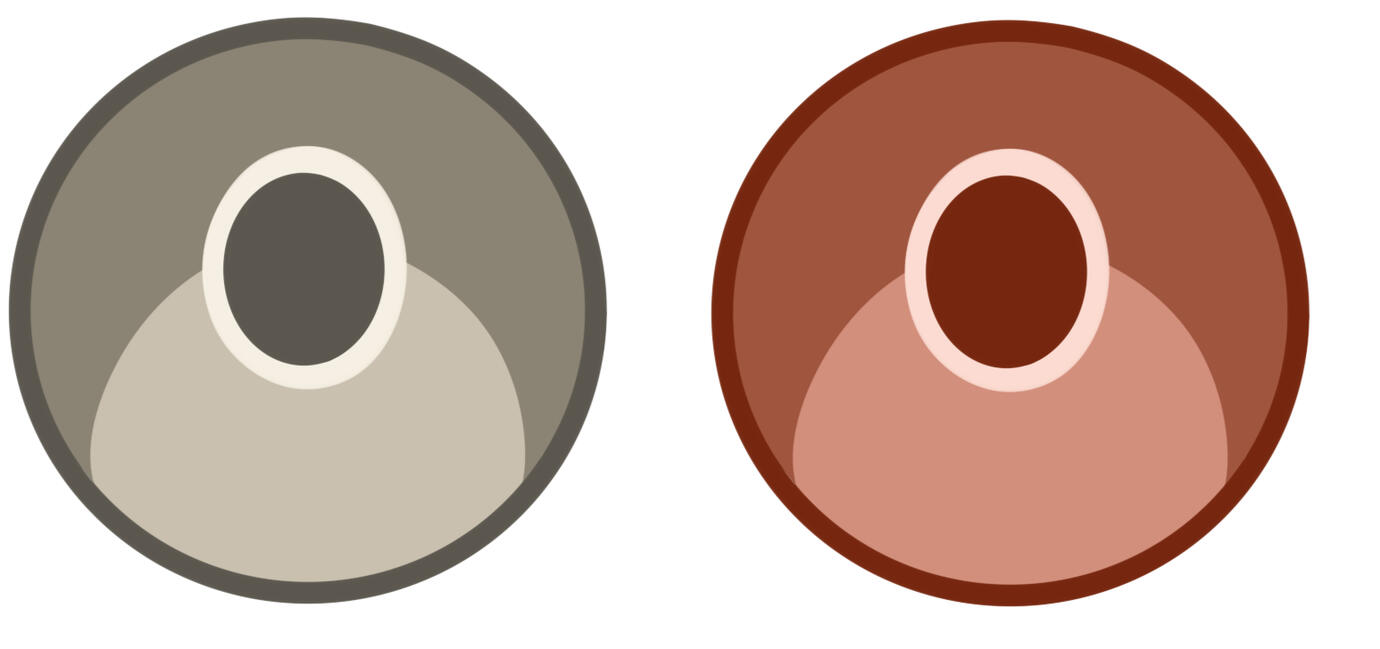
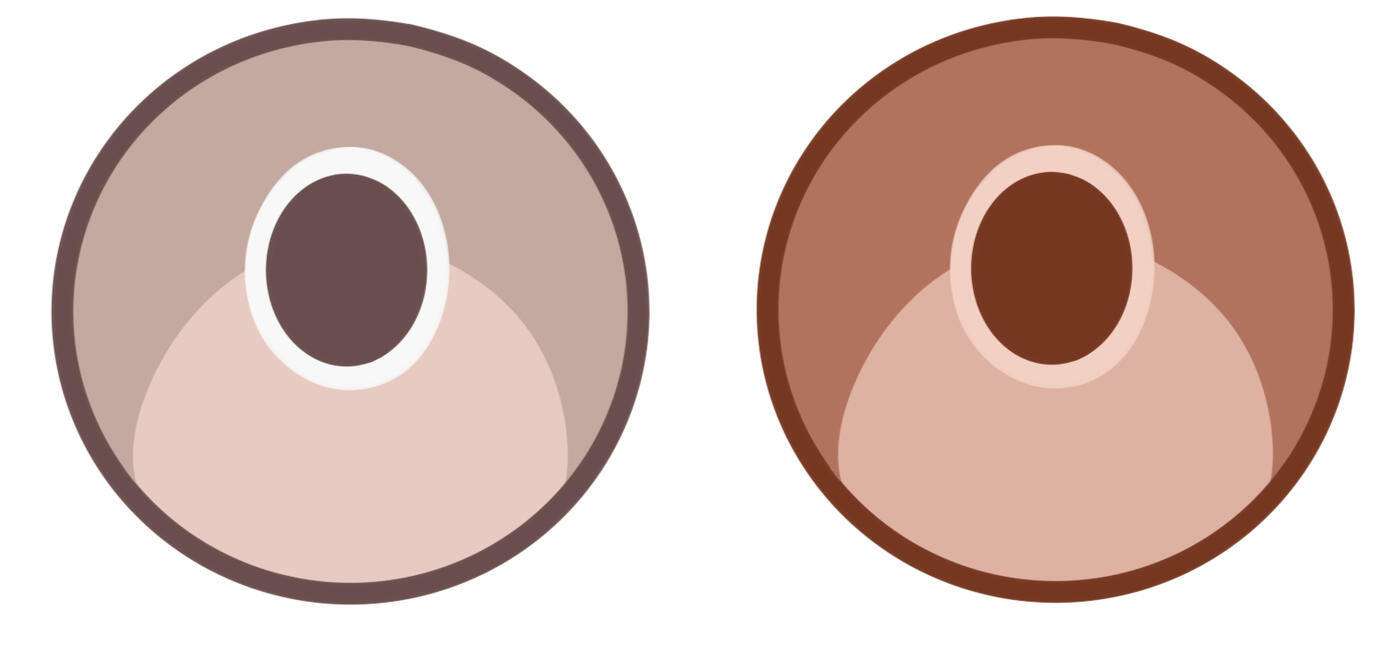


Clothing Colours
Fujishiro members can use as many as the colours listed below, please make sure to use shading colours that fall into the scope of the original colour.





Customs
赤い月の夜
akai tsukinoyo - night of the red moon

The night the Fujishiro set foot onto the land of Iron, a great slaughter happened. It's revered among the people - tales told for centuries to come. The onset of violence and the inevitable arrival of victory is a feat worth celebrating to these people. The bloodshed and chaos is told to have had cosmic influence, and now once a year the blood moon shows itself over the Land of Iron - a celestial event celebrated by the inhabitants of Yukimura. There are various activities done during this event - celebrated by all.
Kenkin - 献金
offering
Elite samurai offer their katanas to the Royal branch - where the First Lady will perform a ceremony in private. The essence the sword collected over the year is cleansed from it, ensuring a blade that is purified and ready to be wielded for the sake of the Fujishiro - a blessing, as they see it. The ceremony is held in private and often the public hears about the tales. These 'elite' samurai form part of the First Branch.
Shingetsu - 新月
the new moon
Shingetsu is an annual event that happens at night, under the moon. Members of all branches are allowed to participate. Lower rank members can challenge higher rank members in hopes to get boosted to the first branch, and declining a challenge is frowned upon. Should a first branch or even royal branch member fail the match, they're disgraced and fall into the second branch. There's a 'no killing' rule - bloodshed is allowed, however if a life is lost, a penalty will be given. No one has dared to breach this rule yet. Winners of Shingetsu are awarded a sparring session with a royal member of their choice, and if they're deemed 'worthy', there is a possibility that they can be promoted to the Muhai rank.

Shōsha - 勝者き
the right to live
The day after 'Akai Tsukinoyo' is a day of exams. Children are expected to participate in shōsha - an exam for 13-14 year olds to prove themselves ready and worthy. This is often held against senseis. They fight until the sensei deems them ready to move on, or until they give up. More often than not a member overestimates their ability and fail to block a lethal attack - this results in death. It's a harsh exam, and it is up to the participant to determine how far they go. Those who do pass in this exam are rarely mourned, as the Fujishiro hold the belief that those who passed should not have been born in the first place. There is no dignity in their death, but it's better to be dead than disgraced.
timeline
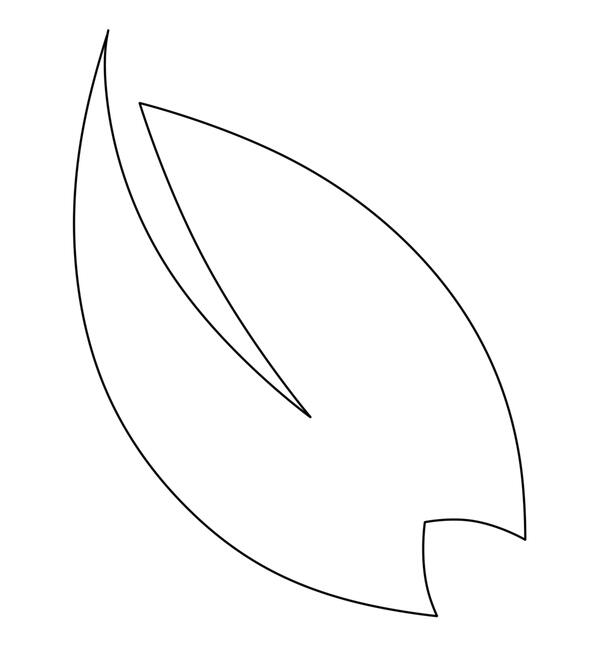
Fujihana's formation
Years have passed since the formation of Aihana and the Fujiwara - in an effort to alleviate any potential tension and threats between Aihana and Konoha, the Fujiwara clan sent a proficient healer - known as Kasumi - to lend her skills to Konoha. Kasumi's devotion to Aihana made this journey effortless, and she did her job fluently. To make more money on the side, however, she opened a small flower shop and would often garden.As the seasons passed, Kasumi had found her soulmate; a shinobi from Konoha. As one usually does when in love, Kasumi and this shinobi married, and she eventually took his side, remaining in Konoha.Decades have since passed, and by combining their last names, the Fujihana clan had formed. It's regarded as a faction in Konoha, strengthening the relationship between Konoha and Aihana every day.Kasumi has since long passed on, but her children had children, and so forth - the Fujihana clan now exists, a testament to the shared history and what love is capable of. There is a branch of Fujihana living in Konoha and Aihana - distant relatives tied by the same name. They are responsible for maintaining the gardens of their villages, and so many more responsibilities.The current clanhead is known as Kiku Fujihana - an old (some even say ancient) woman living in the center of Konohagakure.
Although the average Fujihana member is generally described as empathetic and kind, Kiku doesn't completely subscribe to these characteristics. Old age has allowed her to see both the good and bad in life, and she has shaped her personality based on her experiences. Being a direct descendent of Kasumi, Kiku managed to strengthen the ties between Konoha and Aihana in ways one could only hope to. What was once a strictly professional relationship between the two villages has now become something akin to a 'sibling' relationship between the two villages.
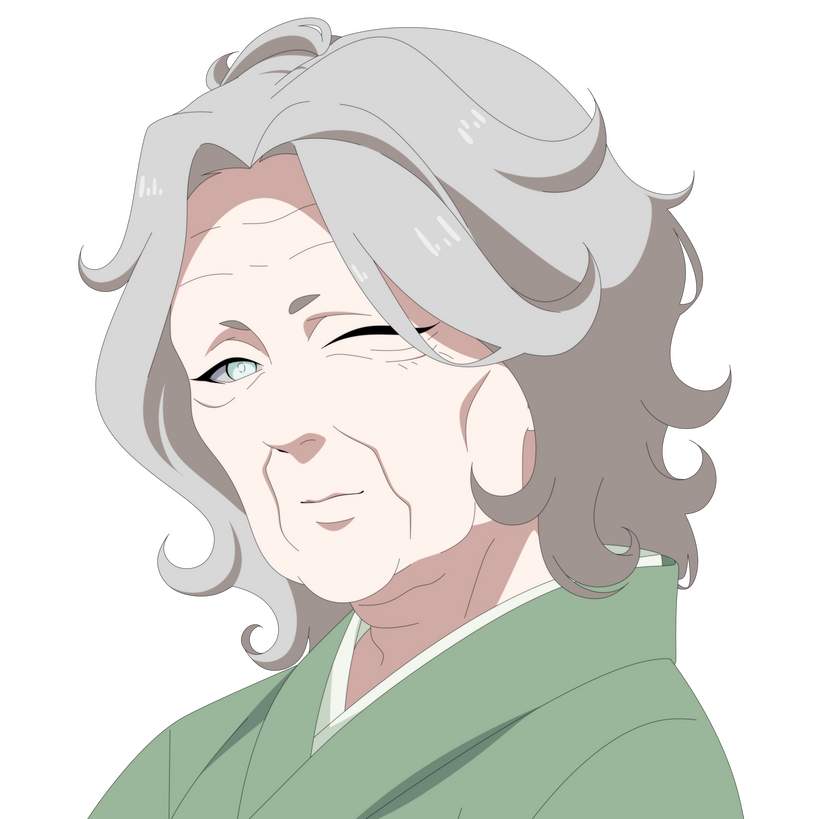
The life of a Fujihana
Childhood
⤷ Ages 0-5
Fujihana are encouraged to spend time outside as often as they can. They learn the basics like any child but are raised with a profound affinity for the world's flora. At this time they can go to some type of kindergarten which is mostly one teacher exploring the woods together with a lot of little kids.Elementary Phase
⤷ Ages 5-7
Children will go to the Aihana academy and learn various skills, make new friends, bond with other and get taught valuable life lessons. They will start their Fujihana specific training like Kurai and Hikari in the Fujiwara do. When they're 8, their shinobi-based training starts. More complex classes are offered.Training Phase
⤷ Ages 9 - 14
At this point in life they are allowed to choose whether they want to follow the path of the Shinobi or if they want to put their talents to use in a different way. This would be helping Aihana or Konoha in different ways.General Phase
⤷ Ages 15+
A child of the Fujihana is considered proficient in their skills once they are able to have a seed sprout into a fully grown, healthy and prosperous tree. The age at which a Fujihana succeeds in doing so varies drastically.
THE NAME OF A FUJIHANA
All people belonging to the Fujihana bloodline have names that relate to flora in some way, shape or form. Names such as Sakura, Tsubaki and Sumire are common examples. Parents name their children after flowery names, or any name to do with plants, to honour their jutsus and forefathers. They carry their names with pride.
civilization
The Village
Fujihana members primarily live in Konoha - however, those who reside in Aihana are seen living near the Fujikaze. They're close to the bordering forests, and have vast grounds available to grow trees, flowers and other plants. They are scattered between living spaces, and blend in quite well. These members will almost always be seen skipping through fields, or allowing some sort of moss or ivy to grow on the side of buildings. They're in tune with nature and all it has to offer for them. Their homes stick out - it's usually eco-friendly, have large openings and have plants scattered everywhere. They're the carefree children of Aihana, even if a few are considered 'elderly.'
Couple Structures
Fujihana members will take anyone's hand in marriage - they are one with nature, and one with their partner. They will often marry into the Fujiwara and Fujikaze clan, some even marry clans from Konoha and other villages. Their genes are weaker when it comes to outsiders - and their offspring will often adopt the genes of their partners. Kekkei genkai are inherited from their partners, and the child will most likely be seen as a whatever their parent is - rarely do they retain traits from their Fujihana parent when their genes are mixed.
Genetics
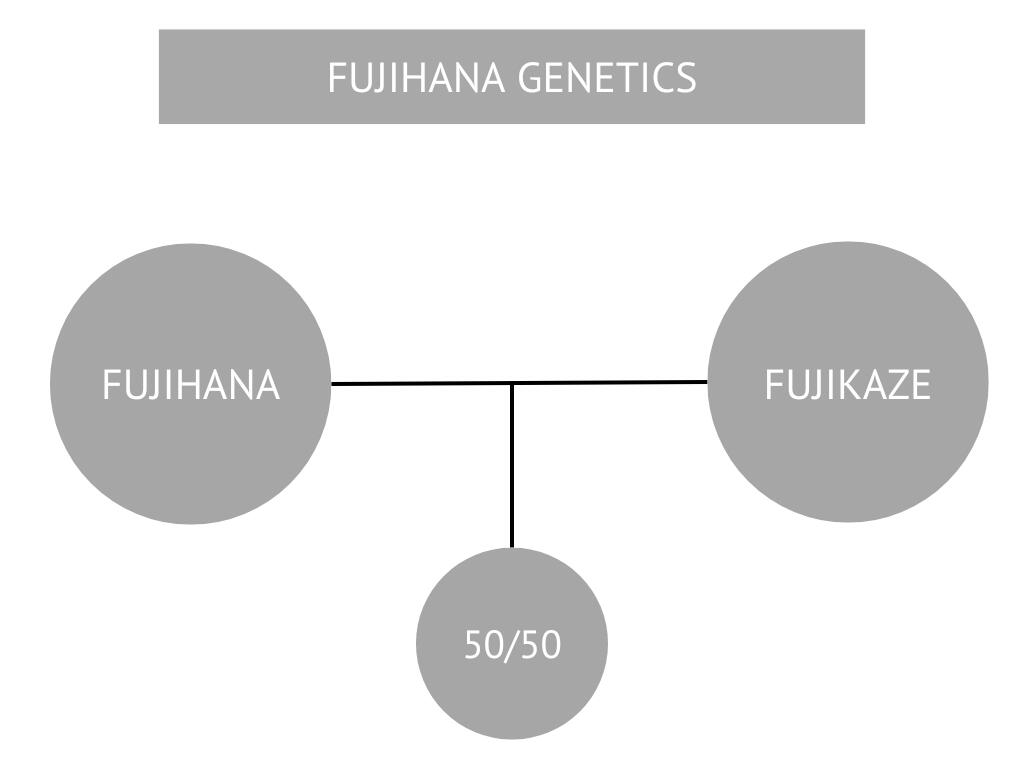
When a Fujihana and a Fujikaze couple procreates, there is a 50/50 chance of the child inheriting either path. It is possible for mixed clan couples to have children who reflect either paths, and can thus have children belonging to either path in the same home.Siblings do not need to share the same clan name to be siblings, however it is rare for them to be in different clans.
Due to the Fujiwara's strong genetic hold, all children produced with a Fujiwara member will follow the Fujiwara member's path. If the parent was a Kurai, the child will be a Kurai and vice versa if Hikari. Fujiwara genes trump everything - there is no possibility for a Fujiwara to procreate and not have a Fujiwara following path child.Example: Fujihana marries a Kurai. Their child will be a Kurai, regardless.
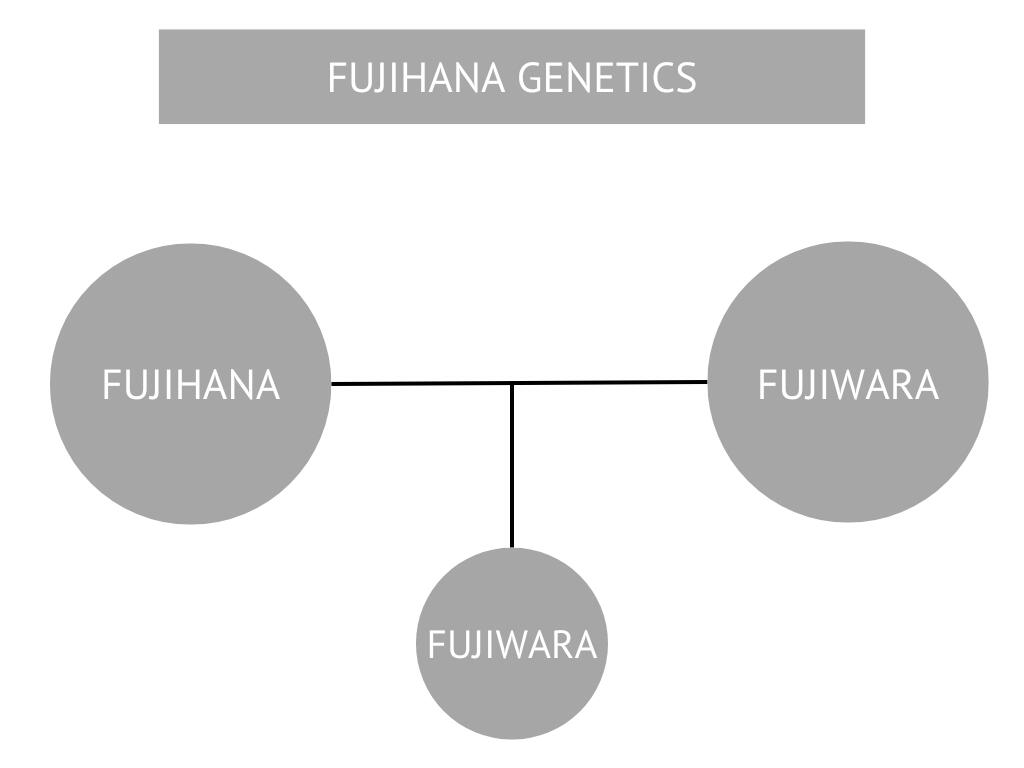
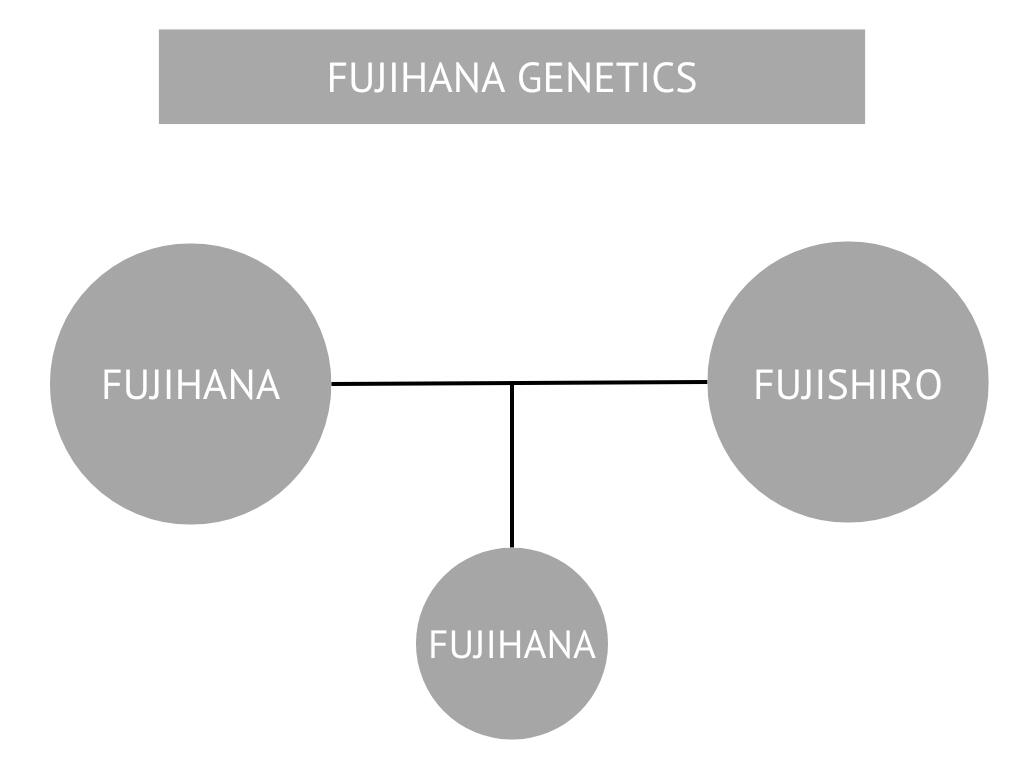
The Fujishiro genetic pool is weak and will cease existence if mixed with another bloodline - this means that if a Fujihana and a Fujishiro decides to have children together, the Fujihana genes will win. The Fujishiro genes (i.e hair and eye colour) will never make an appearance - not with a Fujihana parent. The Fujihana genes will prevail at all costs when mixed with a Fujishiro.
Personality
Fujihana members are often described as sociable - having the ability to talk to anyone to calm them down. They're empathetic, prone to kindness and non-confrontational. They are very good mediators, selfless and thoughtful. Fujihana members rarely take insults to heart - they often brush it off - knowing that ill-intent comes from a deep psychological issue.
Jutsus
Drowsy pollen cloud
Releases a cloud of pollen that induces drowsiness in the opponents.Blinding petal storm
Creates a storm of petals, impairing the vision of the opponents.Paralysing pollen burst
Releases a pollen with a paralysing effect, temporarily rendering them immobile.Toxic pollen cloud
Scatters toxic pollen, causing damage over time and weakening the opponent physically as well as affecting their chakra usage/regeneration.
A flower is only as pure as its environment
All Fujihana members have jutsus relating to Genjutsu - these are strong, powerful jutsus that target their victims to fall ill, or allow them to falter in optimisation. Fujihana members rarely use combat, and will always act in the background to make the fight easier for their allies.
Creating a character
Fujihana members are usually adorned in open, flowly clothes that simulates that of the 'bohemian' style. They like wearing cuffed pants/shirts and will prefer to wear shoes with no soles, or open-toed. They absolutely hate being restricted in their clothing - please make sure to follow the colours. No shading colours are provided, so you're free to choose as you wish.
Hair colors
Fujihana only have ONE hair colour, apart from gray streaks reserved for the elderly.




Eye Colours
Fujihana members can have heterochromia - however most people have one eye colour. You are free to choose.




Clothing Colours
Fujihana members can use as many as the colours listed below, please make sure to use shading colours that fall into the scope of the original colour.

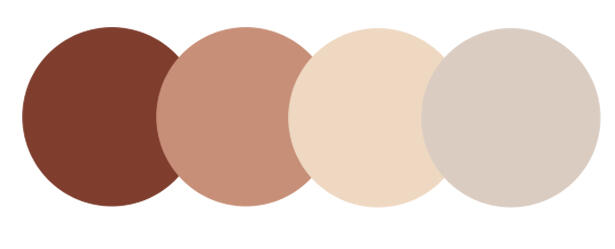

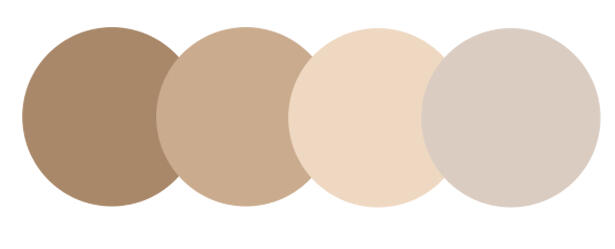
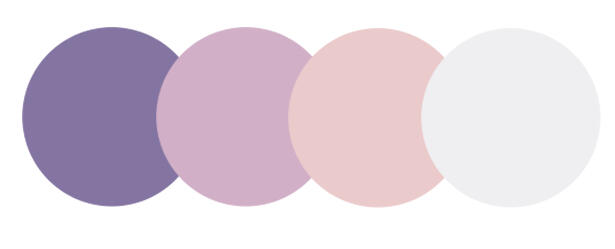
timeline
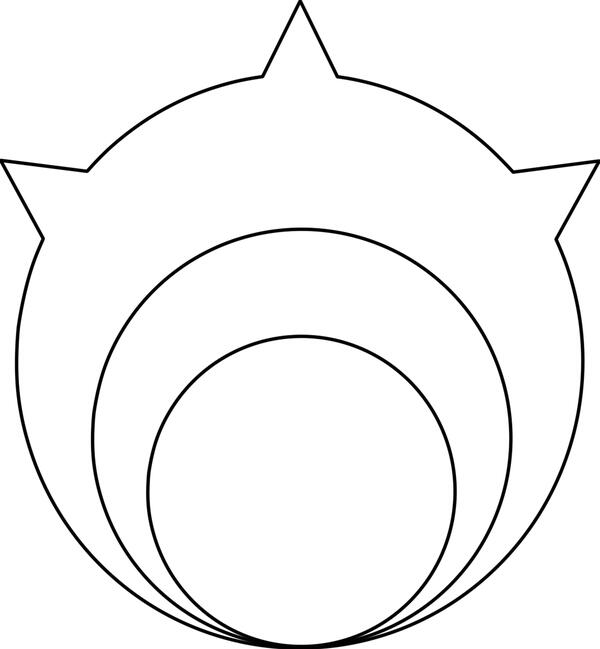
Aihana's Formation
Before the concept of Hidden Villages existed, all nations melted into one. The two clans who were constantly fighting over land existed for many years - before the warring states era started. Just before this era started, the great demon affair happened, which caused the two clans to merge into one.By the time the warring states era arrived, it was made evident that ninja clans were hired to get more territory. The Uchiha and Senju aided in Konoha's formation, but the Fujiwara were on a different path - having a large piece of land already established and centered around their history, they refused to give it over to anyone. Many tried to take it, but with the two paths working together, it proved null.Their dedication and resolve to protect their land and each other led to a display of pure strength, and they were soon also recruited to take territory. They settled on an agreement eventually: leave their land alone, and they will aid the other nations that were forming.Aihana was soon declared as a Hidden Village. Due to new laws being implemented, the first set of Jogi had made a deal with Hashirama - the deal has long been forgotten, but the traditions that were born from it is done to this day.Since then, Aihana and Konohagakure have remained in the same nation, never to be at war with each other. After the second shinobi war, Aihana had become Aihanagakure - the village hidden in the trees.
The Previous Jōgi
Since the warring states era's end, there have been five (5) pairs of Jōgi.
Saisho 最初 - The First
⤷ Michiko and Kanon.
Known for sealing the deal with Hashirama, Madara and Tobirama, Michiko and Kanon had been known as 'The First' Jogi since the nations were formed. They managed the expansion of the village, as well as setting down some clan laws. Michiko, the Kurai Jogi, had worked endless nights in her chambers to create the law that all Aihana residents follow. Kanon, the Hikari Jogi, had perfected the Hokan jutsu - together the two of them passed down their knowledge to the future generations. The First Great Shinobi War was due to the Five Allied Nations fighting over the resources. During this time, Michiko and Kanon led their troops into battle and came out victoriously. They witnessed the fall of Hashirama - and the rising of Tobirama. Michiko and Kanon were responsible for Aihana and Konoha working closely together.Senshi 戦士 - The Warriors
⤷ Asana and Miori.
The First Shinobi World War ended with an armistice treaty, but it also severely injured the Five Great Shinobi Nations. The pact brought about a time of peace, but after nearly twenty years, the countries' economic disparities had become a severe issue. The second world war broke out after that, and in this time Asana and Miori had stepped up as Jogi. Being born during the first war, and being partially responsible for Konohagakure winning the second war, Asana and her partner were dubbed as the warriors. The two were regarded as tactical - fearless, amazing leaders. Due to their reign, bonds between Aihana and Konohagakure strengthened immensely, having sent a bunch of their shinobi to the battlefields. The war counted in their favour, and Konoha emerged victorious. Due to their efforts, Konoha had helped them gain independence and Aihana was since then seen as a hidden village forming part of the Land of Fire.Kieta 消えた - The Disappearance
⤷ Ena and Masato.
The second world war had ended, and again - the nations were at peace. However, great disaster would soon hit. Ena and Masato had not been old enough to take their places as Jogi. Ena, the Hikari, had been killed on a mission - and due to her life being linked to Masato's, that also abruptly ended his. This period was horrific - residents of Aihana grew ill, no power sources were present, the balance of the village had begun to spread to bordering nations. The death of the Jogi threw the nations into peril. Ena and Masato have been dubbed as the Jogi who disappeared - who killed them was never found, and neither were their bodies. To this day, expeditions to resolve this matter is still being held.Mugoi 惨い - The Cruel
⤷ Makia and Taiyō.
Makia and Taiyo were born five years after the disappearance of the previous jogi. By the time they were 15, the two of them had ruled over Aihana (making them the youngest ever.) Makia and Taiyo grew up in an era of instability, coming off from the second war, and then being surrounded by panic their entire lives. When the pair turned 20, the third shinobi war started. Taiyō was responsible for the creation of various torture methods, while Makia executed them flawlessly. They were harsh, driven by a state of primal instinct to survive. Neither Jogi were forgiving - due to Taiyō and Makia, the Fujiwara became a widely feared clan across all nations.Shizuka 静か - The Quiet
⤷ Jirō and Kazuki.
Emerging soon after the death of the previous Jogi, the new pair took it upon themselves to bring the clan into an era of peace. Kazuki, the Kurai Jogi, had improved on lesser-permanent techniques to optimize the shinobi of their village for the battlefield, while Jirō spent his mornings forming bonds with different nations. They two men ruled briefly - the birth of the next Jogi had already happened, and all this showed them was their time was going to be cut short. Their rule was not easy - one of their student was an enigma to the clan, while the other 'abandoned' it. As time passed, relationships strengthened, while some decayed - their love was also tragic. There were some ilnesses Hikari could not treat, and unfortunately Jirō had managed to get it. Unable to live without each other, Jirō and Kazuki decided to have the ceremony sooner than anticipated, crowning the next pair of Jogi. They're known as the quiet rules, while some even refer to them as the hushed rulers: their time was too little.Shukumei 宿命 - The Destined
⤷ Misaka and Ren.
Misa and Ren had to step up as rulers sooner than either of them anticipated - with one Jogi loved by many, and the other loved by few, it was difficult for a while. They were chosen for this life, so it could not have been a mistake. Though very little has been written about them in the clan archives, one thing is for sure: they must continue what those before them started.
The life of a Fujiwara.
Fujiwara members generally live a rather peaceful life when a war isn't present - and this is what it looks like.Childhood
⤷ Ages 0-5
Fujiwara members will manifest as either a Hikari or Kurai path member. At the age of 5 they visit the Hikari compound where an elder will evaluate them and perform a test that reveals their branch.Elementary Phase
⤷ Ages 5-7
Children will go to the Aihana academy and learn various skills, make new friends, bond with other and get taught valuable life lessons. Hikari start their medic training around the age of 6, while Kurai start their physical training at the same time. When they're 8, their shinobi-based training starts. More complex classes are offered.Choice phase
⤷ Ages 8
The child is offered a chance to remain in Aihana to study, or to study in Konoha. Whichever they decide on is a valid decision, and will be respected.Training Phase
⤷ Ages 9 - 14
This is the busiest time of their life. They have multiple classes that help them decide what they want to specialize in. Those who went to Konoha usually partake in the chunin exams, while those who remain in Aihana practice the use of their Dojutsu. Students of the elementary phase are also paired with students who are younger and older than them, being taught how to work in groups.Primary Phase
⤷ Ages 14
The child has learned a lot by this point and is a fine shinobi. They partake in either The Rite or The Awakening, depending on their path. How they perform in these rituals could determine if they advance to chunin or not.General Phase
⤷ Ages 15+
The clan member will start to work, as this is a tradition. They may join the ANBU in Konoha, aim to be a guard, be a general shinobi, take up the path of a mercenary - whatever they would like to do. Their life is officially beginning, they are now an independent person.
Bonds
Something that became undeniably evident over the years after the clans had merged, was that they were unable to live on without each other. As depending on one another, whether it was for sustenance or protection, became custom the people realized it was also a special and deeply rooted bond that they cherished very much.Letting go of ego over time made them realize that they, in fact, very much needed each other and would be lost if they were to be on their own once more. Allowing both branches to co-exist with each other without envy. It was a great honour to be sorted into either branch, and they are constantly reminded that the sun needed the moon and that there would be no darkness without light.The Fujiwara believe that within the bonds formed between two souls one can find the essence of life, and that mankind needs a sense of connection in order to navigate this world and survive. With the strongest and most sought after bond being the one they refer to as ''String of fate''. Believing that from birth two souls are tethered together with a string, it is said that these two people are meant to be together, fitting together perfectly like two pieces of a puzzle. Happiness and prosperity are promised to those who find each other. These types of relationships are nothing more than the mere standard to find within the Fujiwara clan with them more than willing to make a relationship work. With this philosophy it mustn't come as a surprise that divorce is something that does not exist within the clan. You are allowed to divorce, there are no laws against it. It's just that no one has ever felt the need to leave their partner, in fact, it's the exact opposite. Couples are willing to go to whichever length to make their special bond work.
Couple structures
Typically, with its rare exception, Hikari and Kurai people give each other their hand in marriage. As this is often where their fated partner can be found inside the clan. Mimicking their ancient tradition of 'Fated mates' from within their clan as presented by the Jōgi (Clan heads). It is possible for fated mates to exist within the same branch, a Fujiwara can even be bonded with someone from outside the clan.Outsiders are welcomed with open arms, but the Fujiwara may also choose to leave the village. If one wished to live within the village as an outsider, they must agree to live like the Fujiwara do. Meaning they are expected to participate in their rituals and respect them. And to wear the Sacred Cloth as the others are.Due to the nature of the Fujiwara clan, sexuality is insignificant. All dynamics are welcome. That being said: Having no attraction to a person, whether sexually or romantically, does not exist. It's engraved into their DNA, their soul and chakra that they will always experience some form of romanticism toward their fated mate - once they find their fated partners, it's virtually impossible for a Fujiwara to remain platonic. They will remain respectful of their partner's preferences, but a Fujiwara themselves are incapable of not forming these feelings.
Soulmates
All Fujiwara members strive to have relationships like their Jōgi - something that binds their soul together, the ability to feel such intense love and connection. They believe everyone has a soulmate, and thus live their lives according to it. They often describe that they 'know' when they found their soulmate, but the reality is: they are willing to work long and hard to get their partner. There are instances where members thought they'd find the one, but other occurrences had caused the two to drift or separate.Due to their chakra, they are not born with a link to someone - unlike their clanheads, they are independent bodies. Fujiwara members have oracles to guide them in the right path towards finding their soulmate - or their equivalent of it. It's an idealogy, a goal to reach.The Jōgi have the exact same chakra - a reincarnation of the demon they fought years ago, always seeking to be together. This way, they are linked - born to feel each other's emotions, thoughts and feelings since birth. Normal Fujiwara members only get this link upon marriage, when an Elder of the Hikari branch binds their souls and chakra together - a link forged in unity. This cannot be undone, and they thus share this connection permanently.
Children
Children born inside the clan inherit the path of either one of the parents. All offspring of this couple will be in the same path. It is impossible for siblings to have a different path, even if there are stepchildren within the family who have solely one parent in common.Children adopted into a family can be from a different path due to them having no genetic connecting to the other family members.Children with non-Fujiwara parents get sorted into a path that suits them best. Chakra nature, temperament and affinity to techniques gets taken into consideration before sorting them into either Hikari or Kurai.

光
Hikari
People of this path gained the Yang energy from the demon. They are skilled healers, proficient in sealing jutsus and use long ranged attacks. Hikari people are in touch with their feelings, social and overall upbeat. They rise with the sun due to their aptitude for agriculture and merchant jobs.Those of Hikari descent are often times; Bubbly, kind, level-headed, patient, vain and prideful.
Often trusting their emotions over their mind and willing to go the extra mile for most anything.

暗い
Kurai
People born into the Kurai path are naturally gifted fighters. They inherited the Yin energy, physical endurance, heightened senses and a deeply rooted fierceness. Being strongest when the moon has risen allowed the Kurai people to excel in shinobi-work during the night.People of Kurai descent tend to be described as; Cocky, aggression prone, logical and analytical.
They are known for making vital decisions with minimal thought, trusting their instincts rather than their emotions.
Customs
all customs mentioned below take place in aihana
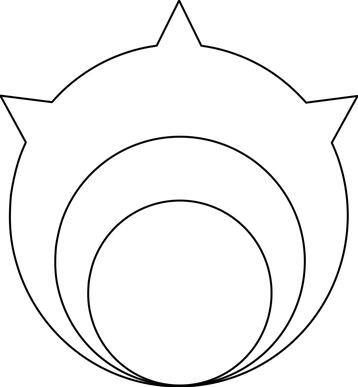
Fujiwara Customs
'The Rite'
The story told to many children is that of the founding of the village and the clan. About how two lovers overcame a huge challenge and defeated a great evil trough the power of perseverance and the need to be together with their fated one. It would be told that whenever the lovers experienced ridicule or setbacks they'd tell everyone that they would 'fight until they could be together' and they did.Many years later, during the rule of Tobirama Senju, the leaders of the Fujiwara clan had made an agreement with him: They will aid Konohagakure as long as Konohagakure helps and aids them.This later translated into a custom, members of the Kurai would visualize their reason for battle and have to vow to serve their community until their self proclaimed duty has been fulfilled. Some members fight until they find their soulmate, some fight until their siblings are successful- whatever their reason, they must never fight for negativity.
Nowadays this custom has transcended into a ritual better known as 'the Rite' This happens at the age of 14 to all Kurai members. Their ears get pierced to help them store a fragment of demon chakra to help them use their abilities to their full extend.They receive a weapon of choice, and eventually, all fresh Kurai members will activate Izanami to showcase their understanding of their path: A path to fight for protection, much like Izanami does.
'My name is, ___ Fujiwara, and I will fight until___.'
'The awakening'
The tale of the founding of the clan is used to teach the children to live together harmoniously. It's explained that the clan that used to live on the dark side of the wall forgave the other clan for never coming to their aid, even if they had many chance in doing so. They were willing to put their pasts behind them in order to look at the future. The clan residing on the light part of the wall vowed to use their powers to aid the other clan form then on, and that they never had to suffer loss or discomfort again if they were able to prevent it.Hikari members are expected to vow the same exact thing to their community. Promising to shield their bonds from illness and grief to the extend of their abilities. 'The awakening' refers to the moment the clan members ears are pierced and a small amount of the demons chakra gets transferred to the accessories. Allowing them to use their abilities to their full extend.Hikari members are expected to vow their service to anyone they need to work with, even if this person is not affiliated with the clan. Giving their vow can be seen as a formality, but it forms a bond between the two people, helping the Hikari to use their abilities more effectively.
'My name is ___ Fujiwara, I am honored to lend you my strength. Let me aid you in battle.'
'Kekkon'
結婚
The rule of the clan is trusted upon the 'Fated Ones'. The couple chosen by the mark bestowed upon them at birth to become the new vessels for the demon's chakra and, in some way, be the new lovers to have found each other to protect their village. When the new Fated Ones have been born, they shall be trained by the current leaders with the goal of eventually taking over, the reigning rulers decide when the new Fated Ones are ready to take over. The new leaders are not able to deny this in any way; It is their fate.
"We have lived, loved, fought, protected and ruled. There is nothing left to do. Nothing left to teach. There is nothing left, but to leave it to you"
During the ceremony, the previous rulers hold hands and watch the new rulers perform a dance, while a village elder (typically from the Hikari path) does a chant to bind them. Unfortunately, the previous rulers will pass away during this- but no one is grieving them. Their chakra continues to live on in the next rulers, aiding them and guiding them in times of need. Once the dance between the new rulers are done, the previous rulers will have officially passed on. The new rulers will bow, and then celebrations begin to commemorate their new unison and to thank the former rulers for all they have done in their lifetime.
A member from the Hikari and Kurai will have been selected in advance to carry the remains of the previous leaders out of the ceremonial hall to be prepared for their burial. Each path member taking their respective leader away.A day after Kekkon, another celebration starts: The burial of the previous leaders, which also serves as a rememberence day for passed on Fujiwara. Families will gather to place paper charms on their wisteria trees, spending time with their deceased family, while the new rulers will thank the previous ones and bid them farewell.
'Kenshin'
献身
When two lovers have found each other and feel they are ready to devote their lives to each other they undergo a ritual known as 'Kenshin' (devotion). This ritual can be compared to marriage, but for the people of the Fujiwara it goes deeper than that.Once a couple has found each other and want to spend the rest of their lives together they are welcomed to speak with the Rulers and the council about how and when they would like to officially join their partner in life. All the festivities apart from the actual ceremony are customizable to the couples hearts content.During the ceremony the two rulers will perform a ritual that will allow everyone to see the strings of fate of the couple get connected to one another, visualizing the forming of their marital bond: Their devotion.
When Fujiwara members are devout to one another they are able to sense each others presence at all times. This translates to warm feelings when the other experiences extreme happiness or a heavy feeling in the pit of their stomach when their partner is extremely saddened. Enduring extreme pain will present itself as a constant nagging in the back of their mind, immediately reminding them of their partner - if the pain is severe, it will manifest as a physical, dull ache.The closer the couple is physically, the stronger these sensations.Outsiders are welcomed to marry in Aihana as well. It will not be called Kekkon by the village people, but outsiders will often use it to sound like 'one of the locals'. The Fujiwara members often don't mind and appreciate their culture being celebrated and shared. Outsiders will not be married by the Rulers of the clan, but they will be married by a member of the council (often an elder) who are allowed to officiate.Since Aihana is a popular town for both ceremonies and honeymoons people often stay there for extended periods of time.
'Itsumo'
いつも
''Until death do us part'' is a very well known marriage vow, promising to stay with one another until the choice has been taken out of their hands by the cruel hands of fate. But what if fate was the reason you have been together in the first place? What if it is not your mind telling you to be with each other but the very essence of your existence as a person? What if you were meant to be together because your very soulmate seems to be woven into your soul?Can one live on if their other half has passed?The Fujiwara have struggled with this question for centuries. To love is to let go, and to have lived is to die. But it does not have to be at the hands of fate. Much like the leaders of the clan choose when they pass on, their residents can as well. いつも (Itsumo) or; 'Always' is a ritual where two lovers seal their soul into a wisteria tree they have planted at their moment of marriage and live on forever within their village and its bountiful nature.
Gifting your body and chakra to the village and its next generations to live in love and prosperity.The ritual will always be preformed per request and are done by the leaders of the clan. The lovers who requested the ritual can choose how and with whom they want the ritual to be performed. Most lovers choose to renew their vows as they promise to share eternity together to it's full extent. More often than not the entire clan is invited to celebrate this new beginning with them. Once the ritual has ended the names of their offspring are hung on a little paper on the branches of the tree.
'Kaika-sai'
開花祭
During spring the 'blooming festival' (Kaika-sai) is held within Aihana. The festival lasts three days with at the end of the last day a spectacular phenomenon that can only be found in Aihana village known as 'Bright Rain' (Akarui ame - 明るい雨). This phenomenon is when the ground releases all it's stored chakra and helps the wisteria of Aihana bloom strong and powerful troughout the entire year. As the chakra seeps out of the ground towards the buds of the flowers, the wisteria glows beautifully almost all troughout the night untill sunrise. This phenomenon attracts many travelers, honeymooners and lovers of all ages and it is for many people a wish to go and see it.Other than the festival itself there are no special customs involved with the glowing of the wisteria. Leaders of centuries ago had agreed that something as beautiful as the Akurui-ame must speak for itself and did not need any involvement of man. There is also no need to pay for entrance, the Fujiwara people believe wholheartledy that it's beauty must be shown. It is strictly forbidden to harvest the wisteria for it is believed that they carry the souls of departed Fujiwara. After harvesting they will emmidiately wither, further pushing the believe that they are strongly connected tot he village, the land and the clan itself.The festival that starts 2 days prior has many different stalls where a plathera of different things can be bought: Books, jewelery, clothes, food, drinks, flowers and many more. There are games, shows and tournaments open for anyone to enter. There's also the Sokutei (測定). A tournament solely for Kurai warriors above the age of 14 to enter to see who will be earn the title of strongest (Saikyō - 最強). This title can be either stolen or defended and the winner will be crowned by the current reigning Hikari ruler.
'Tsuihō'
追放
Tsuihō - the banishment. This custom is not one that's performed often, but it has happened a few times. Sometimes, Fujiwara members break clan laws. The breach of a law can manifest itself in many forms.Probation Periods, Punishments, Banishments and Death. Though all are different, being banished would probably be considered the most disgraceful way to be reprimanded for ones actions.The transgressor will be summoned before the council of elders alongside the Jogi. Their case will be reviewed, and they will be judged. When a decision to banish the said member is made, they are given no time to settle their affairs. The process is grueling and shameful.The transgressor will be taken to a room underneath the Kurai compound, connected to the Main Office via underground tunnels. When in this room, the Jogi will be waiting for them. They will be seated, and the Hikari Jogi will remove their Dojutsu through a forbidden jutsu that is exclusively taught to the leaders.Phase two starts when the Hikari Jogi asks them to remove their earrings - although this seems lovely, their choice to remove their earrings is based on the Kurai Jogi. Kurai are known to be a little impatient when it comes to following orders, and more often than not do the transgressors have their earrings ripped out by the Jogi. Sometimes the transgressor has 5 minutes to remove them, sometimes they have 5 seconds. It is completely depended on the Kurai Jogi's mood.Phase three is the strip of the clan crest. Their sacred cloth will be removed from them, and any clothing baring the crest as well. Their belongings will be taken away and burned before them.Tsuihō ends when the last embers of the burnt clothing stops glowing, and then they are escorted out of the village by a guard. These members are forbidden from ever entering Aihana again, and may only see their family members outside of it.


Fujihana and Fujikaze customs
'Seichō Suru'
成長する
Seichō suru - meaning to grow. The Fujihana clan has a custom that lasts a few years, which will allow the member to graduate and become a full-fledged recognised Fujihana member. This entails the process of planting a seedling of a tree, and allowing it to grow to it's full size in 24 hours. It requires immense chakra control, concentration and will power to be able to do this. Too much chakra can damage the tree, while too little can slow down the process or even kill it.Depending on the age in which the Fujihana member believes they are ready, they're supposed to speak with their sensei to organise the event alongside Hikari. When the sun begins to rise, they're given a seedling - the member must thus plant the seed and allow it to grow. If a strong, healthy tree can emerge from said seed within 24 hours - the student passes, and is seen as proficient in their skill.
'Tori no Odori'
鳥の踊り
Tori no Odori is known as the bird dance - a ritual in which Fujikaze members partake. They train for a significant period with their senseis to garner the attention of an avian creature - they cannot choose which avian will follow them. Certain dances will attract the creature, which then leads to a pact being made. The avian creature will bond with the member, and shortly thereafter the member will receive a chakra-imbued tattoo on their face (depending on their path) which will allow them to access and harness the abilities of said branch.
Abilities

Hikari abilities
Hikari abilities are quite the mystery to outsiders who do not know in depth how their techniques work, the working and concept are quite foreign and people are often left wandering about them.

Dōjutsu
Unmeigan - Eye of Fate
The Unmeigan grants the yielder the power to see the bonds a person has formed. Activating the technique renders the user blind as they see nothing but darkness and the golden threads flowing around connecting to other silhouettes and chakra signatures.When activated, the unmeigan allows them to see a person's strings of fate - meaning the Hikari member can see every individual bond an other person has formed. They are able to differentiate between bonds as well as two bonds exist between people: major and minor bonds.Major bonds connect people to other people - family, friends, their lover. These bonds carry memories, emotions - the very essence of the relationship forged between people.Minor bonds connect people to other people as well, but they don't really have a relationship. It can also tether them to strangers, people they saw once or twice. These bonds are insignificant, but they aren't useless.Hikari on the battlefield have the unique ability to temporarily sever minor bonds. Temporarily severed bonds can be used in very different ways. If the Hikari severs their own minor bond, they're able to use it as some kind of wire/rope that can then be used as a weapon (or whatever they need it for.)If they temporarily sever the string of their opponent, they are able to overpower their opponent's will and 'control' them to do certain actions. This method is quite risky, so it isn't used often. If the Hikari's will isn't stronger than their opponent's, they lose the ability to reconnect that string which is punishable.The unmeigan also grants Hikari members to see through the eyes of Kurai members, being able to see what they see, making it possible to help Kurai members in foreign territory. When this is enabled, there is some telepathic transmission that allows the two to communicate through thoughts. Hikaris are the only ones who can initiate this transmission, and it is up to the Kurai to accept it or not. This is only possible if the Hikari has established a bond with the Kurai - this is typically done when the phrase they learn at The Awakening is uttered to the Kurai.
Techniques
Fighting Techniques
Grade C Techniques:
All Hikari can do these Techniques⤷ Blade of Light
- A manifestation of their chakra, which translates into a yellow hue and turns into small blades, that can be used to inflict physical wounds on someone.⤷ Minor String Severance
- By severing minor strings, the Hikari can use it to a multitude of ways. Their own minor strings can be used as wires, while the strings of their opponent can be used to manipulate and control them.⤷ Genjutsu Immune
- All Hikari members are immune to genjutsu. They will not fall prey to it, usually. The only exception is the Uchiha; they possess a kekkei-genkai that's centered around genjutsu. Hikari will fall victim to it. Genjutsu cast by other shinobi do nothing to them, though.
Grade B Techniques:
Hikari that belong to the ANBU and Guard can do this⤷ Bond Seal
- Taiyo and Makia developed a torture technique to sever bonds permanently. The Jogi after them, Jiro and Kazuki, altered this technique to seal a bond away. This is usually done on Kurai members to amplify their battle experience, and are never used on other Hikari. This isn't painful to either party, but it is dangerous. This has a major effect on the Kurai, and if not done properly, can cause the Kurai to go into a frenzy which will endanger both the Hikari themselves, and everyone around them.⤷ Major String Severance
- With the correct clearance, Hikari are allowed to sever some major bonds of their opponent. This is very rarely done, as the Jogi will not permit this act for just anything. There is a wide range of criteria that needs to be met before a mission, and if found that a Hikari severed a major bond without permission, they can either be exiled or sentenced to death depending on their situation.
Grade A Techniques:
Exclusive to Hikari that are in the Aihana ANBU and the Jogi.⤷ Entanglement
- Bond entanglement is a painful experience to those it happens to. Because Hikari can see strings of fate when the unmeigan is activated, it also becomes tangible. Hikari have the ability to touch these strings, and then tangle them. It is a simple act, as they grab the strings, and then begin to twist it in their hands. This technique bred fear into opponents, as the victims cannot see these strings - and therefore believe the Hikari are some demon manifestations.⤷ Permanent Severance
- Hikari who are taught B grade techniques can only sever one bond at a time. Permanent severance is the act of severing multiple bonds at once, which manifests as physical pain to the victim. It has been described as pain closer to an aneurysm bursting. It causes the feelings of immense pain - pain strong enough to have the target pass out, or go comatose. Hikari need explicit permission to use this technique. It is a torture technique, and also punishable if used without the go-ahead from the Jogi. The effect it has on the Hikari member is that it pushes them into a depression due to bonds being sacred, and an overwhelming amount of guilt. There are exceptions, though; some Hikari have been trained for years to push that guilt down and not feel it.
Hokan
Hokan acts as a storage technique exclusive to the Hikari path. The technique to share chakra with others is depended on bonds; Hikari can manage personal bonds relatively well.⤷ Personal bonds are those formed with their family, friends, other relatives and community members; they're also known as major bonds.⤷ Artificial bonds are formed with their targets/enemies. These bonds are formed via a paper seal which are made by the Hikari themselves and imbued with their chakra. Usually, these seals are placed on the enemies by a Kurai member as it requires close-contact, which is something Hikari members do not do.The Hikari will store some of their chakra in the seal to aid them in battle. Whether this is friend or foe, there's no difference to the effect. Whilst aiding them some of the seal barer's chakra gets stored into the seal. The longer it stays on, the more gets stored. When the user calls the seals back, the remaining chakra will get transferred from the seal to the Hikari. Still: Friend or foe, does not matter.This will significantly weaken the seal bearer if the mark have stayed on for quite some time, gaining advantage.It's dangerous if a Kurai and Hikari are using this as an aid.Usually Hikari members can handle between 3-5 seals at a time (not personal bonds) - and if they wish to target additional enemies, one of the previous seals need to be broken.Personal bonds have no limit.
Healing
Path of Awakening
Hikari members have an amazing sense to feel any chakra impurities, such as chakra illnesses or invasive/foreign chakra matter. Above all, they are healers, and all excel in this craft. They can restore small limbs that have been lost (such as hands, fingers, toes, feet, eyes - in the case of a dojutsu, it will be lost and merely the eye will be restored.)Any physical wound can be healed, the more severe it is, the more chakra it will take from the Hikari.Any illnesses resulting from chakra can most likely be cured.Hikari members cannot heal cancers - nor can they bring back the dead. Some injuries result in immediate death, and though Hikari are skilled in healing, this is above them.Hikari people have rather pathetic pain tolerances, but they are respected by everyone. They are sensitive when it comes to physical contact, and more often than not experience pain to the highest degree.

Those who have witnessed Kurai abilities have grown to fear them. Kurai path members are often referred to as 'demons' and seen as an omen of death. They're respected by those who are their allies, and those who are their enemies wish they were not.
Kurai abilities

Dōjutsu
Anshigan - Eye of Darkness
The Anshigan is inherited by all Kurai members. When activated, it grants the user with amazing abilities.The anshigan grants dark vision, meaning the Kurai can see in the darkness as if it were daytime. Their eyes absorb all light, and they're able to see perfectly in total and complete darkness. This makes them optimal to fight at night, being skilled in stealth missions.Dark Realm is another ability the Kurai get. When performing the appropriate seals, a dimension opens up. It's like a tear in the sky, and the Kurai have the ability to step into it. Dark realm aids them in teleporting between shadows - the shadow must be as big or bigger than the Kurai member in order for them to emerge. Dark realm takes a lot of chakra out of the Kurai member, and the member can spend a maximum of three minutes in this realm before their chakra levels become dangerously low. This is almost exclusively used in a life or death situation.Opponents pulled into dark realm will be blinded immediately. There is a lack of light, meaning there is no light to reflect - however, due to anshigan, the Kurai is able to absorb everything and see perfectly fine. It doesn't take much to defeat an opponent when they're in dark realm.Apart from dark realm and dark vision, the Kurai will get a boost in strength. It is nothing major, but the impact is definitely felt when they do attack someone.
Techniques
Fighting Techniques
Grade C Tecniques
All Kurai can do these⤷ Weapon Mastery
- Kurai are expected to master at least one weapon by they time they turn 14. These weapons differ, depending on the Kurai. Most opt for katanas, or some sort of long spear. It's not uncommon to see a large variety of Kurai master the same weapon.⤷ Hand to hand combat
- There will be moments in a battle where weapons and jutsu are out of the question - this is where the primal instinct to live and survive kicks in. Kurai are extremely skilled in close-range hand to hand combat. They are deadly, even. Their reflexes are sharp, they're quick to dodge or evade an attack, and masters at reading body language and understanding fighting patterns.⤷ All anshigan abilities
- Kurai members possess the same kekkei-genkai, the same dojutsu. They're all able to tap into it's abilities, and use it accordingly.
Grade B Tecniques
Kurai taking the path of the ANBU in Konoha, Guard and Mercenaries can do these.⤷ Chakra Absorption
- There will be times where the Kurai member is low on chakra, almost fatally low, and without a Hikari by their side. These times are rare, but a technique to absorb a medium amount of chakra has been created. They're only able to do this when their levels are severely low - and their own systems do not respond well to it. Kurai exclusively absorb chakra from plants or animals, never other people. They're unable to do so. After the chakra is absorbed, and they do what they need to do, they become lightheaded and try to return to Aihana immediately. The Kurai's body refuses to use this chakra, and will use the 'natural' chakra the Kurai had, leaving this 'invasive' chakra as a storage holder. Hikari healers will try to restore some chakra to the Kurai when they do reach them, and rid them of the invasive chakra.
Due to their smaller than usual chakra pools, their body makes up for it in muscle and endurance. They have a tough exterior when it comes to their physical make-up and an exceedingly high pain tollerance.
Izanami
イザナミ - Demon Shield
Izanami is a jutsu exclusive to the Kurai, it's a hidden jutsu that engulfs its user. It is dark blue/purple in colour and takes shape of the demon who had originally been sealed in the form of a cloak.Furthermore, it alters the Kurai member's physical features as it turns their nails into something resembling claws, sharpens their teeth to resemble fangs, and blacks out their iris - leaving the sclera white.This barrier absorbs most of the impact from most attacks, though it has a severe drawback. It’s usually a 50/50 gamble on whether an attack hit the user or not, as wounds have a delay on showing up. This phenomenon has people fearing the clan, having heard tales such as ‘the clan of demons’ or ‘monsters’ and that they’re un-killable, unable to be harmed. The reality of it is that they are very much able to be harmed, but opponents who managed to survive and escape a fight against a Kurai path shinobi simply never stayed long enough to see the wounds manifest.They are strong, fast, but have small chakra pools. Their stamina is unmatched, but they also heal very slowly. They always need to see a Hikari path healer, as untreated wounds become fatal pretty quickly. This is caused due to their DNA being so conditioned to an outsourced force of healing that it has become incompetent to healing itself.Upon extreme injury that poses a threat to the Kurai's life, Izanami will activate on it's own - giving the Kurai some sort of shield to absorb further attacks, and give them a slight boost in energy. This state of Izanami is very dangerous, as the sudden surge could drain their chakra, or render them unconscious. If such a state is ever triggered, the Kurai must seek the attention of a Hikari as soon as possible.Izanami behaves differently when a Kurai member is married. The shield has to do something with the pain it absorbs.- The cloak can absorb a certain amount of pain. The bits and pieces it doesn't absorb manifests as a physical wound after some time.- Married Kurai has the 'leftover' pain transferred to their counterparts. Sometimes the body will have both a physical wound while Izanami also transfers it to their partners.- Kurai members absolutely love the battlefield. They are barbaric in nature, always down to fight. Their time fighting is their passion, always has been, always will be. Prolonged use of Izanami will eat away at their emotional side, ridding them of 'emotional ties' that will boost them in battle.- Due to this, they have a chance to go off the rails and attack anyone. Kurai who start to lose control over this is usually checked by a Hikari. Hikari can tamper with their bonds, forcing them to calm down.
Creating a character
When creating an oc for the Fujiwara clan you must first decide on a path. There is the path of light (光 - Hikari) and darkness (暗い - Kurai). Both paths have different roles, characteristics and specialities within the clan.
Rules for making a character
1. Before finalizing any and all designs, please check with the founders first via private messages.
2. Any designs posted on any platform without confirmation will be asked to take down.
3. Features such as albinism and heterochromia are LOCKED and require PERMISSION. These slots are gained via participation in events, which are posted in the discord server.
4. Two toned hair DOES NOT EXIST within the clan. Your oc can have ONE hair colour. If your oc is older, purely GRAY streaks will be allowed. Or fully gray hair.
5. Shading that creates the illusion of two toned hair is forbidden as well.
6. You are only allowed to use the colours provided. Base and shadow colours are not to be changed.
7. All designs are sent into the design team where they colour swatch.
8. Vitiligo does not exist in the clan.
9. Skin details such as dark pigment spots, freckles, wrinkles, beauty spots and scars are allowed.
10. Tattoos and piercings are allowed - all tattoos must be sent in for approval.
11. Your OC must have visible undergarments and a sacred cloth. Shoes must be open toed - however, socks are allowed.
12. If you have a valid lore reason for your oc not wearing an undergarment, you are free to present it. If it is deemed as acceptable, you are free to discard it.
13. If your OC is in Konoha's ANBU, they will wear the standard ANBU outfit. Slight moderations are allowed - the clan crest is woven into the back of their vest.
14. Aihana ANBU slots are requested. You cannot have your OC join the Aihana ANBU without permission.
15. Aihana ANBU outfits are not open to customization.
16. You do not need to use the examples provided below. Members wear semi-traditional Japanese clothing, or shinobi outfits inspired from the Naruto Anime.
17. Boruto-era characters can have more modernity to them as the timeline is more modern.
18. Your character can be from any era, but the main era takes place during the timeskip and shippuden.
19. Body mods such as elf ears and coloured scleras aren't allowed.
20. All members of the clan are looking for a mate. It does not need to consume them every waking hour, but it is for them the ultimate goal. It's not possible for a Fujiwara to not be interested in love. They might be discouraged.
21. All Fujiwara members are monogamous. Previous relationships may exist but these usually happen during childhood. After the age of 20 it's common for them to look for that special connection.
22. Please check availability before using any special features or roles.
Creating a character
Clan color-schemes
Due to the clans marital habits with couples usually made up out of one Hikari and one Kurai soulmate there are no path specific genes. Any color can be chosen from the provided color-schemes.You are not allowed to stray from the provided colours. If found doing so, you will be reminded to correct your design.
Hair colors
More than one hair color does not exist in the Fujiwara clan.





Eye colors
NOTE: The pupils and lineart of the eyes can be black like in the canon Naruto style. These colors were chosen to provide a wide range of colors to fit all art styles. White pupils are not permitted.







Albinism
SPECIAL ROLE - YOU NEED EXPLICIT PERMISSION FOR THESE FEATURES. ASK BEFORE USING.Albinism is something that, though rarely, exclusively happens within the Kurai branch. Due to their ancestors growing up in darkness and this later translating to a lifestyle lead by the moon's cycle, it can happen that there will be children born with a melanin deficiency.Albinism for your character will be available trough slots, without permissions please refrain from using this color scheme.

Traditional clothing
The Fujiwara clan has an extraordinary sense of community, this is also evident in their traditional attire. Clan members all wear dark, somewhat tight fitting, undergarments with a loose-fitting jacket over that. The jacket is made of what the clan refers to as ‘’the sacred cloth’’ and has two different color schemes complimenting both the Hikari and Kurai branches.The clothing listed below are EXAMPLES of what the style should look like. It is, however, HIGHLY encouraged to make your own design for your character. Masculine and female presented models can also be ignored, anyone can wear anything. As long as the colors correspond with the chosen path, and the Sacred Cloth's pattern does not get changed.That being said, we do expect everyone to keep their designs original and unique. When designing traditional garment, keep an eye out for other clan members!
Undergarment examples
As mentioned before the undergarments are dark and the top half of the garment are form fitting, the bottom half can be loose. The necklines are usually high.

Undergarment accessory examples
Sacred Cloth examples
The Fujiwara clan symbol can be found on the back of everyone's sacred cloth. (It does not NEED to be completely visible and can be covered by hair etc.) The colors of the clan symbol need to correspond with the branch.
Sacred Cloth accent color:
Sacred cloth color:
Accessory examples
Accesories shown in the Sacred Cloth examples are usable as well.
All accessories are available for both branches.Fujiwara people love to accessorise with:
Tassels I Bows I Obi belts I Obi Charms I Rope- NO FISHNETS -THESE COLORS ARE FOR ACCESSORIES.
Not for undergarments or sacred cloths or hair.
All members of the Fujiwara clan have pierced ears, regardless of gender.
This happens at the age of 14.
(Gold for Hikari and silver for Kurai. No other metal colours are permitted.)
Shoe examples
Standard Naruto slippers are available as well.
All shoes must be open-toed but socks can be worn.
glossary
1. Hikari - Path of Light
2. Kurai - Path of Darkness
3. Aihana - The village Fujiwara members live in
4. Elders - The children of the previous Rulers
5. Chosen Pair - The Hikari and Kurai member born with the purest form of the demon's energy in them, the next rulers of the clan.
6. Bonds - a social relationship formed between Fujiwara members and their peers.
7. Jōgi - Clan Heads
8. The Rite - A ceremony in which Kurai members have their ears pierced, a weapon of choice bestowed upon them, and where they make a vow.
9. The Awakening - A ceremony in which Hikari members have their ears pierced and they make a vow.
10. Kekkon - The Marriage of the Chosen Pair.
11. Kenshin - Marriage between normal residents of Aihana, as well as foreigners.
12. Itsumo - A ritual in which people choose to be sealed in a wisteria tree to live 'forever', which is essentially a burial.
13. Kaika-sai - A festival that happens every year in Aihana to celebrate love and Aihana as a whole.
14. Akarui ame - Bright Rain, a phenomenon that happens to the wisteria.
15. Sokutei - A challenge for Kurai members where they spar and get crowned the title Saikyo.
16. Saikyo - The title of the strongest.
17. Unmeigan - Dojutsu for the Hikari known as the 'Eye of Fate.'
18. Hokan - Chakra Storage Technique.
19. Anshigan - Dojutsi for the Kurai known as the 'Eye of Darkness.'
20. Izanami - A demon shield used by the Kurai.
21. Darkrealm - A dimension made by a Kurai's dojutsu.
22. Sacred Cloth - A cloth/overgarment members wear with their clan symbol on the back.
Frequently asked questions
These questions have been asked within the Fujiwara server.
Q: Is the sacred cloth customizable?
- A: Yes! Many variants are allowed, however, the cloth must connect at the back. Whether this is upper back, lower back, or the full back — this is where the clan crest is placed. The clan crest is positioned in an upright position. The reason for this significance is that most people who have come across either Kurai or Hikari only noticed their clan crest as they were defeated in battle, once the Hikari/Kurai has turned their back on them to leave them. Over the years this has bred fear (and respect) toward the Fujiwara. The clan crest acts as a warning to not cross them!Q: How do pairings work?
- A: Your OC is allowed to be shipped with another Fujiwara OC of any gender (though their age must be relatively close within each other, and legal.) Your OC is also allowed to be shipped with a cannon character, or an OC outside of the Fujiwara clan. Remember that all OC x OC ships need permission from the OC's owners.Q: Who are the teachers of the Kurai path & Hikari path? Would it be the clan leaders?
- A: These roles will be divided between characters the founder create and your ocs (if you would like them to!) If interested in the role of teacher feel free to reach out to a founder to discuss possibilities!Q: Do they have summonings and other chakra natures?
- A: They do not have summonings, nor chakra natures that are separate from Yin and Yang natures. Please make sure to read about this in the abilities tab.Q: Can we draw our characters in other Eras?
- A: Yes! Make sure to send in all designs to the founders for approval!Q: Which timeline are we in?
- A: Your OC can be in any timeline, but if you wish to follow the timeline of the current Jogi (Misa and Ren) the ages are as follow:
Naruto: 16-17
Timeskip: 17-20
Shippuden: 21-22Q: When do Ren and Misa become Jogi?
-A: Ren and Misa become Jogi during the timeskip, when they are both 18.Q: How do we go about parents?
- A: Upon joining, you will be granted an opportunity to design your OC's parents. They are not secondary ocs, and count as additional characters. Please do not focus on them too much. They follow the same rules as general OCs do, and do not require clan sheets.Q: Can couples of the same sex have children?
- A: Yes! Usually via adoption/surrogacy. We are aware that some clans have 'special' techniques that allow mxm and fxf offspring, though this is not a thing in the Fujiwara. They have very intricate chakra systems, and this will cause severe complications.Q: Are our OCs allowed to have markings/scars/tattoos?
- A: Yes! Natural markings such as birthmarks, freckles, pigmentation etc. is allowed! Tattoos as well, and scars. If you are uncertain about some design choices, please reach out to one of the Founders!Q: When our OC's leave the village they still have to wear our clan's clothing right?
- A: Depends. If your character is living in the clan and just going outside: Yes, why would there be a reason to change clothes? If they are outside of the village for a long time (school/work/moved) etc: No, they can wear whatever. Most characters are proud of their heritage and home! It's a special thing to wear their sacred cloths, so disregarding them the second they can isn't really the vibe we are going for. The cloth stands for community, family and bonds. Fujiwara's are EXTREMELY attached to it. It is also a way to be protected. The Fujiwara clan is well known trough-out the Shinobi world and bearing the crest of a Fujiwara will leave you unbothered by others most of the time!Q: Do orphans exist within the clan?
- A: Yes. Some parents do pass away during missions, or gain illnesses that Hikari cannot cure - some couples choose to be sealed away as well. Aihana does have an orphanage in it as well, your OC is free to live at the orphanage or with another authority figure. Children living by themselves does not exist though - the Fujiwara are close knit and will take a child in if their parents pass on.Q: Does the leaders follow the same lessons at the Academy as everyone else? Do they go to the academy at some point?
- A: All Jōgi attend classes like other Fujiwara. At the age of 8 they're enrolled into the academy, at 10 they're presented an opportunity to study in Konoha. Both Ren and Misa declined the opportunity, and remained in Aihana. However, a major difference is their time at school. They have special classes on some evenings, and when they're 18 they start their Jōgi training — usually new leaders step in around the age of 20 - 30, Ren and Misa were thrown into the deep end due to unforseen circumstances.Q: Is there a time limit on how long we can have our slots?
A - There is no time limit but after one unused slot, no additional ones will be awarded.Q: What happens when a soulmate dies?
A - When a Fujiwara member marries another member, their lives get linked. Their goal is to have a relationship like the Jogi's, who are linked since birth.Marriage means you feel each other's emotions, sometimes their pain, have a stronger bond in general.When a soulmate dies the following happens:Unmarried - they are riddled in grief, which can lead to a decline in self care. This will be very rough for them and very few people manage to bounce back.Unmarried - some have their bonds severed when death is present, as your ties do not disappear when someone dies, it just becomes duller and duller, and carries more grief. When that bond is severed, they can move on freely and without worry.Married - The other party has a 95% to die as well. Their lives are linked. In extremely rare cases do the other party live, and even when they do, they are hollow - a shell of what they used to be. This depends on how strong their bond was as well.Some widows/widowers can move on and seek out love again if they survive the death of their counterpart, but again, not common.





